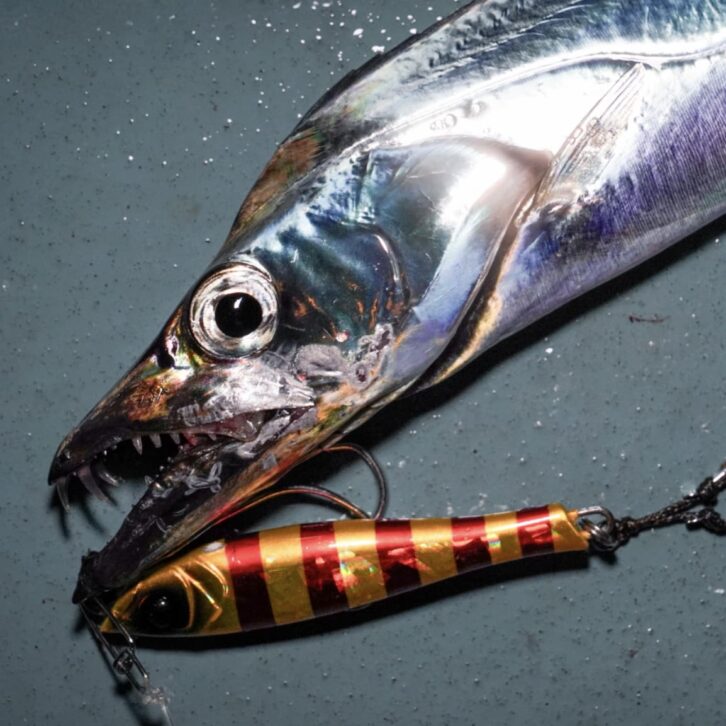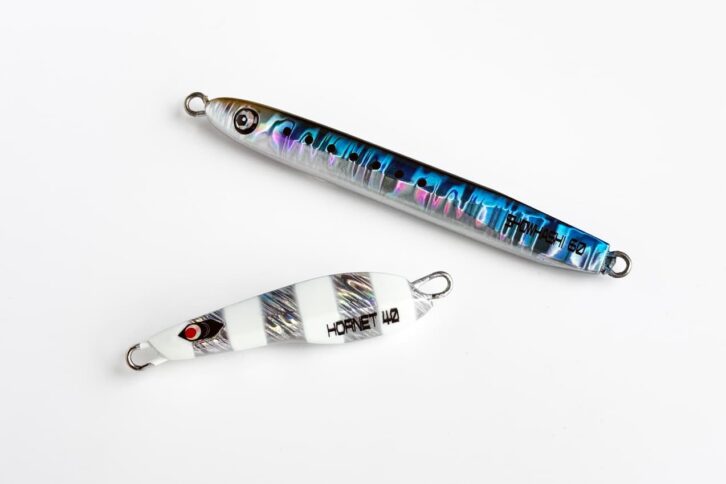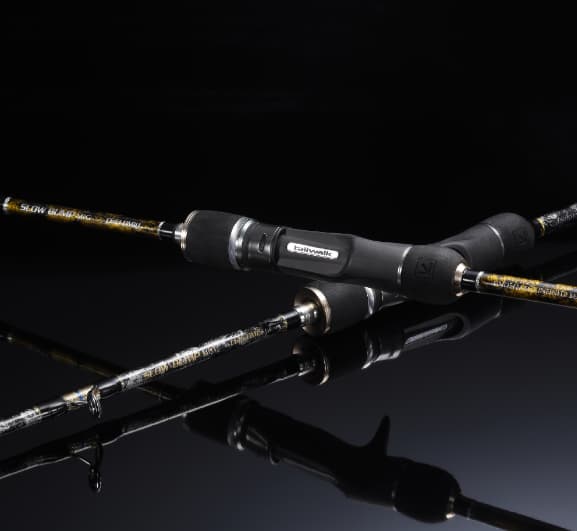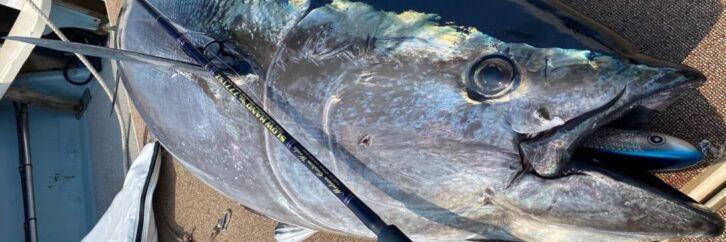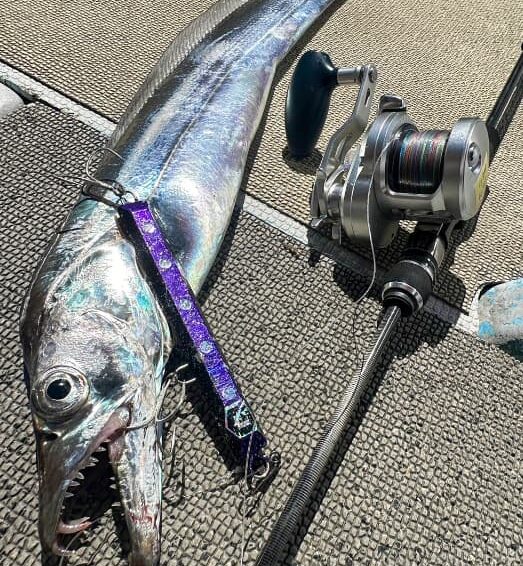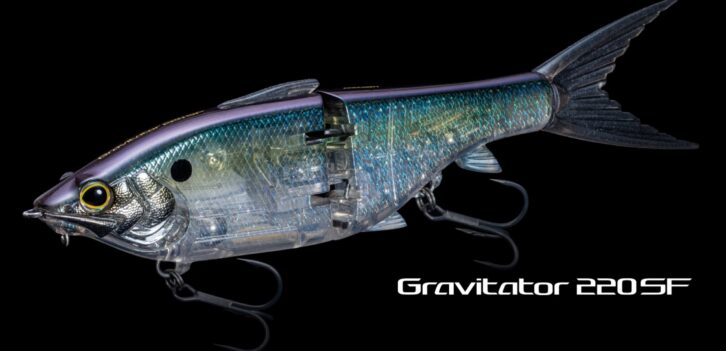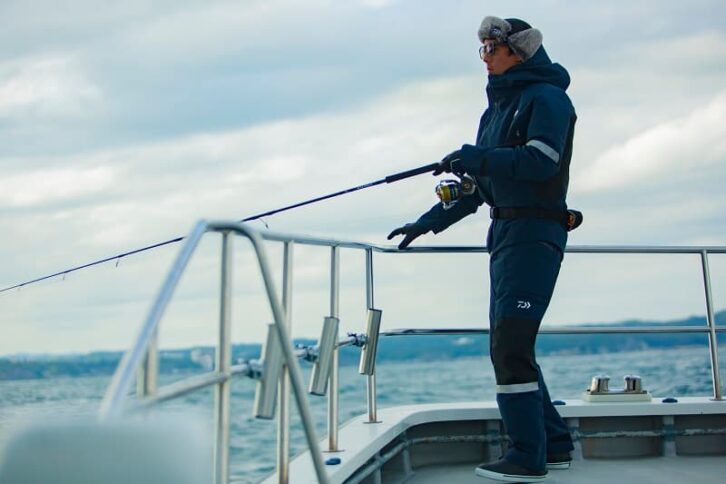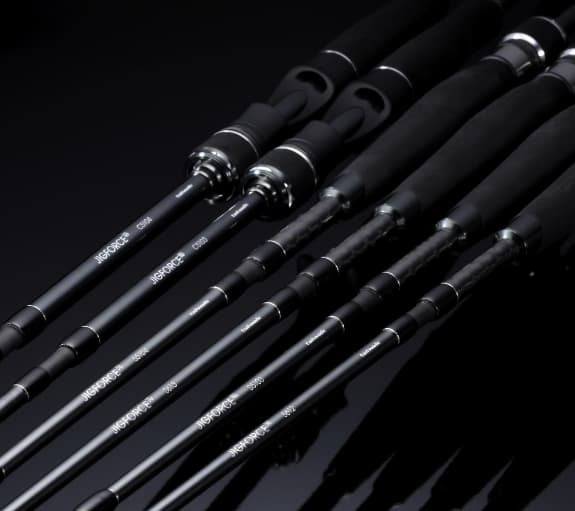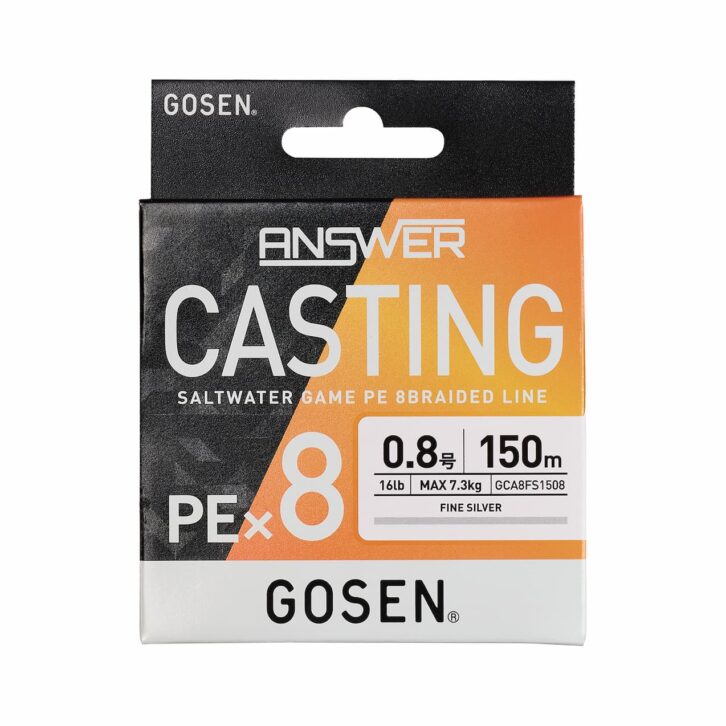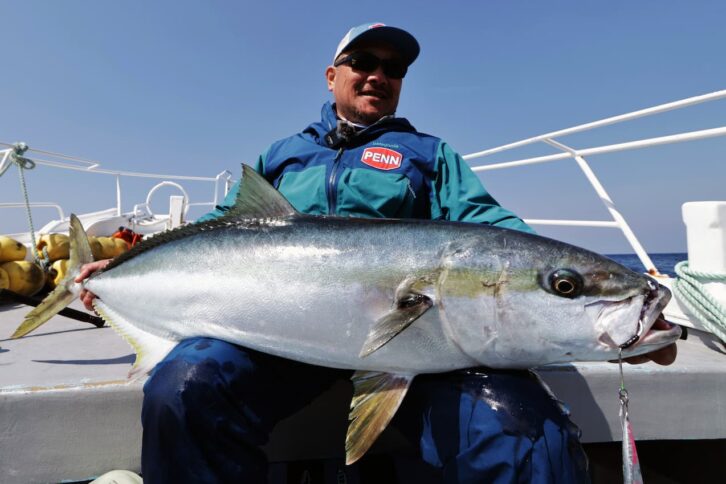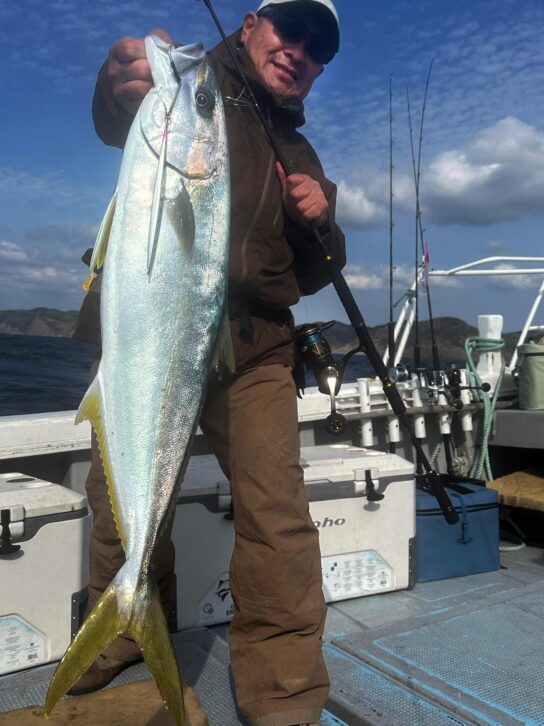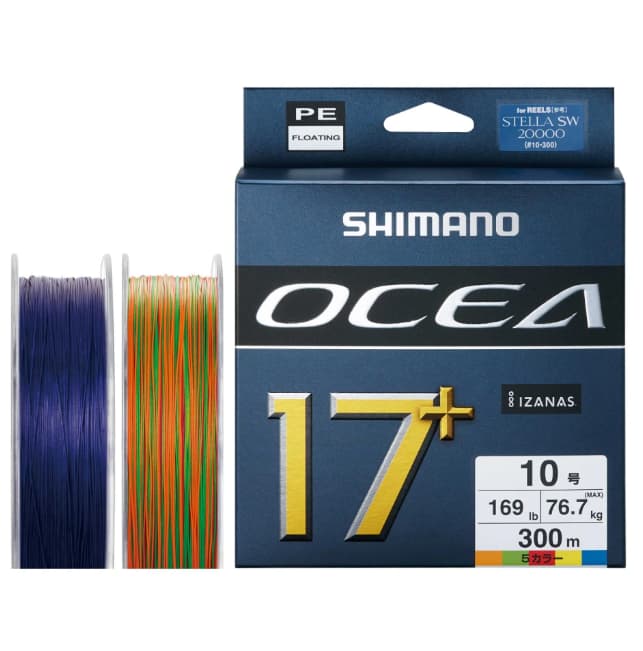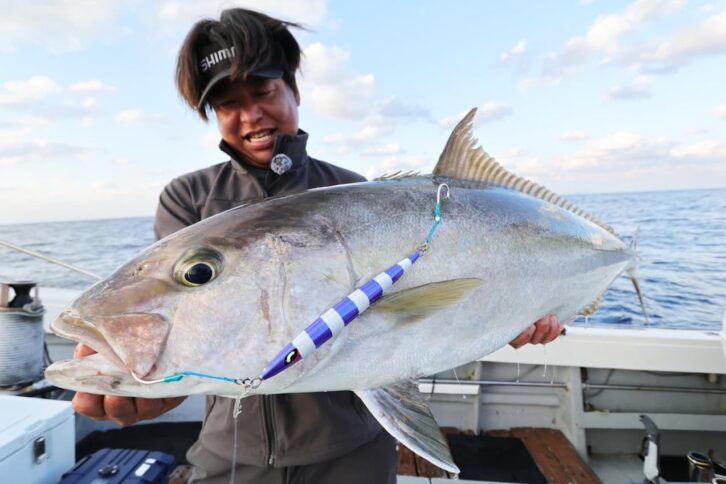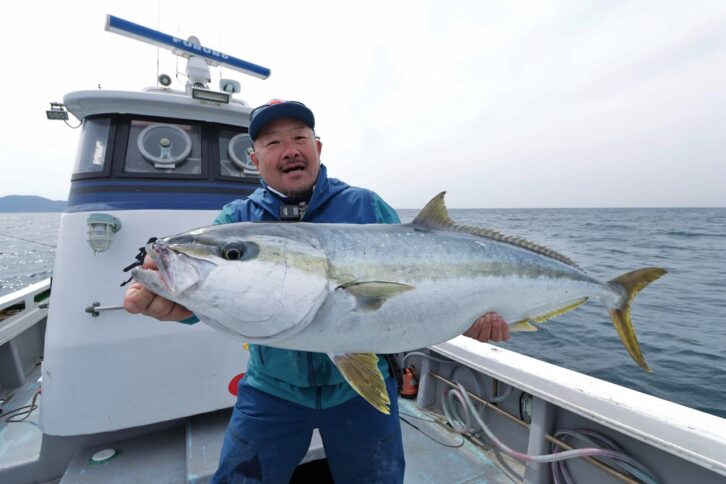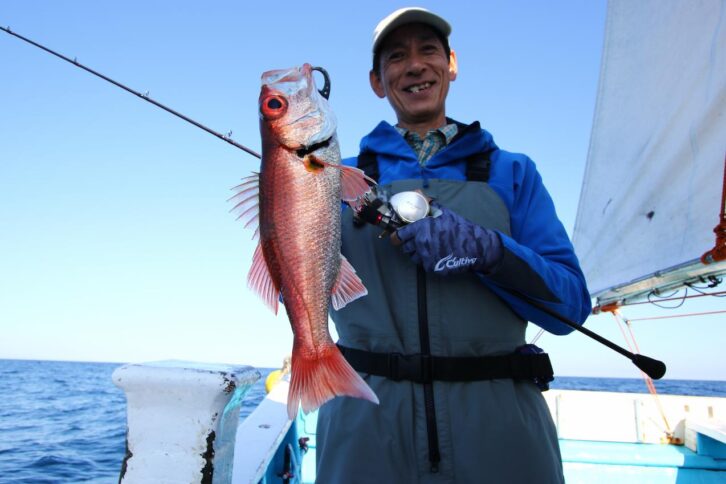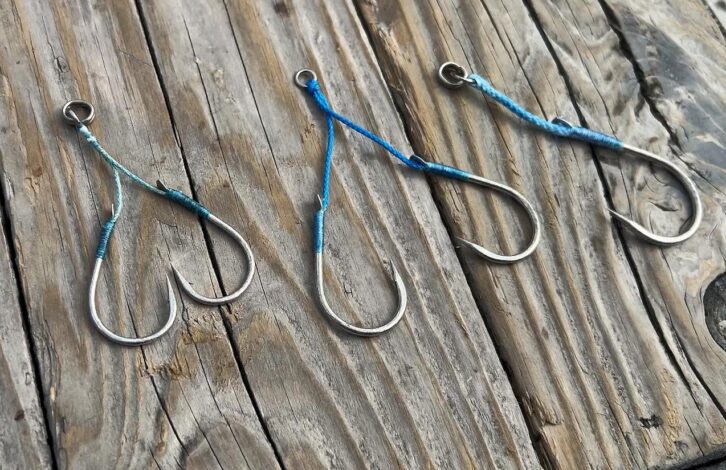First, it is important to know the basics!
Basics of Light Jigging [Tackle Selection] Rod and reel selection explained!
When you want to try light jigging, what should you choose your equipment (tackle) based on? What kind of rod is best? Is the reel bait or spinning? Even for light jigging, there are a variety of products on the market, and it is difficult to know which one to choose. In this issue, we would like to share our selection criteria for beginners.
![Basics of Light Jigging [Tackle Selection] Rod and reel selection explained!](https://anglers-time.com/wp-content/uploads/2025/05/250523_1.jpg)
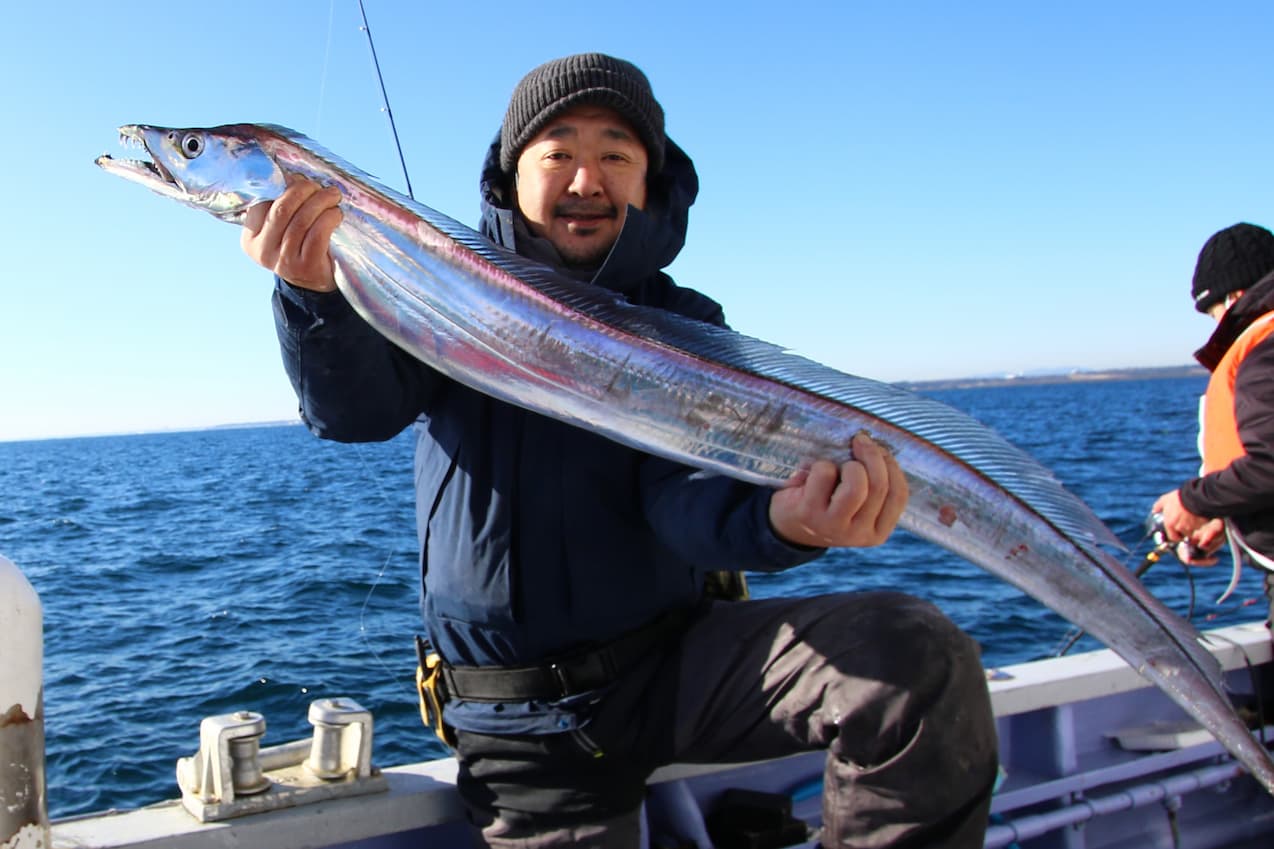
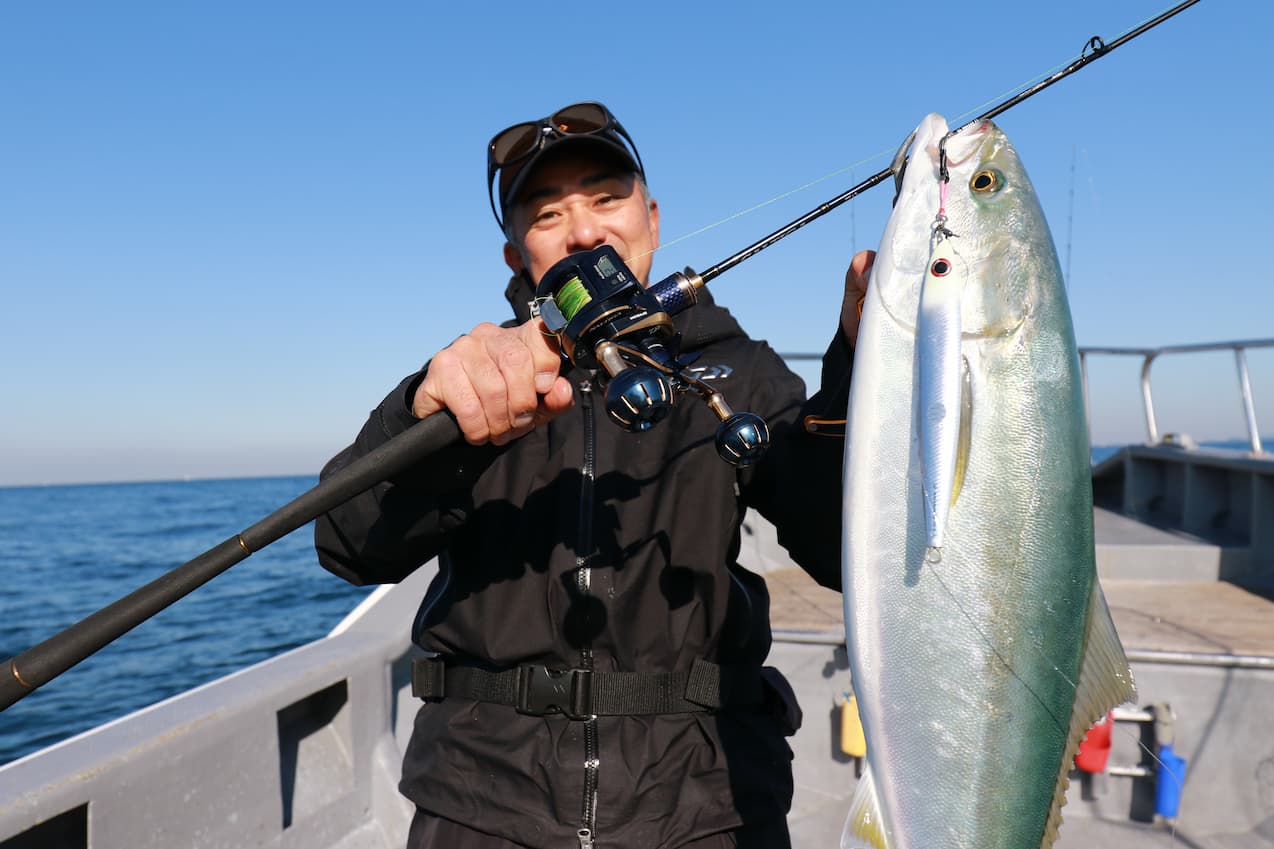
INDEX
Where do we start and end with light jigging?
There is a wide range of jigging techniques, from super-light jigging with light jigs and thin line to targeting large fish such as bluefin tuna, yellowfin tuna, and large greater amberjack. There are also styles called slow jigging (slow pitch jerk) and blade jigging. In any case, tackle should be selected according to the size of the fish to be targeted, the depth of the fishing grounds, and the thickness of the line. Among these, light jigging is a style that can be enjoyed in a lightweight manner. Is this “light” in terms of the line? Is the equipment light? Is the target fish light? There is no standard for what is called “light jigging,” and beginners may be confused. Therefore, here, I would like to proceed by saying that the line thickness is “light.
First of all, light jigging is generally referred to as using PE line No. 2 or smaller. Depths range from shallow to deep. Taking the case of the Tachio fish, which is representative of light jigging, as an example, the depth may range from about 10 meters to sometimes as deep as 200 meters. Also, the sizes to target range from lightweight rootfish, hairtail, sea bass, and yellowtail (small ones) to large yellowtail (yellowtail size of 8 kg or more). Is it possible to catch yellowtail with light line? It will be, but we are mainly targeting medium-sized yellowtails with No. 2 line, and often a large yellowtail will come in the middle of the line. In that case, if you take your time and don’t panic, you can often catch them. Also, in light jigging, do you move the jig slowly to search for fish or do you move the jig vigorously to attract them? The tackle will differ depending on whether you are going to move the jig slowly or vigorously to attract the fish. As you can see, there are different styles of light jigging, and the best tackle depends on the fish you expect to catch and the fishing location.
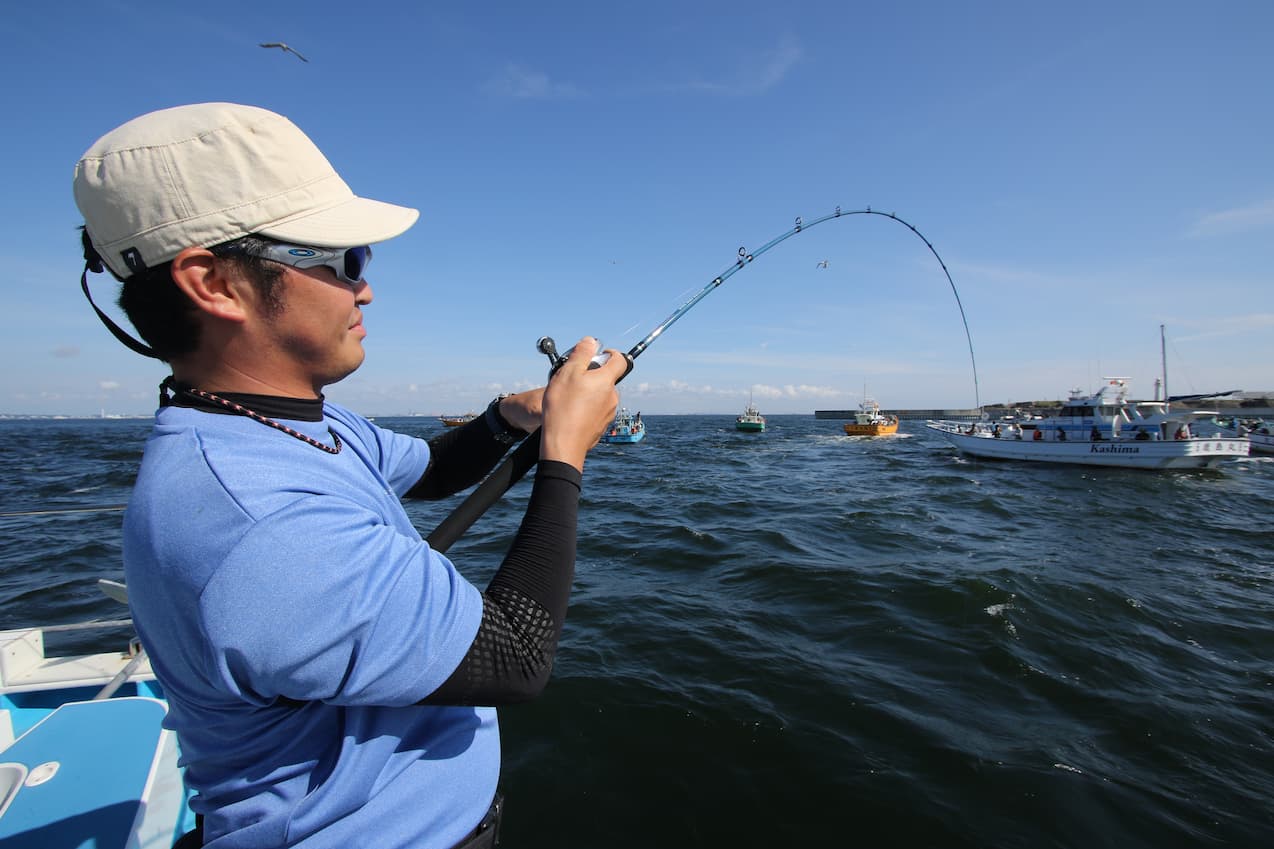
It is no exaggeration to say that light jigging has fishing grounds all over the country. Targets vary depending on the area. Popular areas are so crowded that fleets of boats form. Incidentally, there is no set standard for light jigging. Therefore, the term “light jigging” is used to describe fishing with line of PE No. 2 or less. There is also super light jigging, which is even lighter than light jigging and uses smaller jigs and thinner line. This time, the explanation is limited to light jigging.
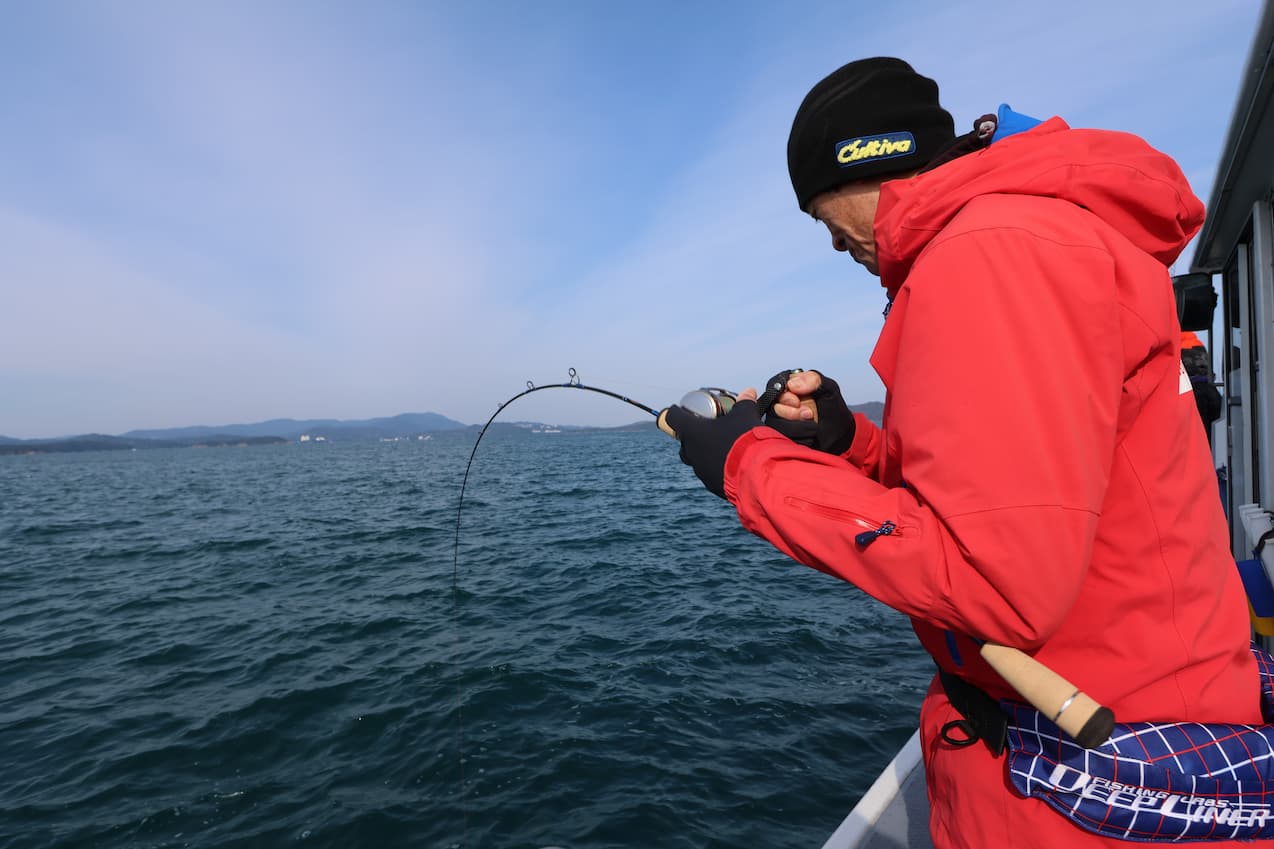
Slow jigging (slow pitch jerk) is a style of jigging that is unique in the way the jig is manipulated. The jig is bounced up using the return of the rod tip, but there are many situations in which a fine line is used in this style as well. Many anglers use this style of fishing in light jigging fields. Light jigging, however, requires different tackle and jig manipulation methods.
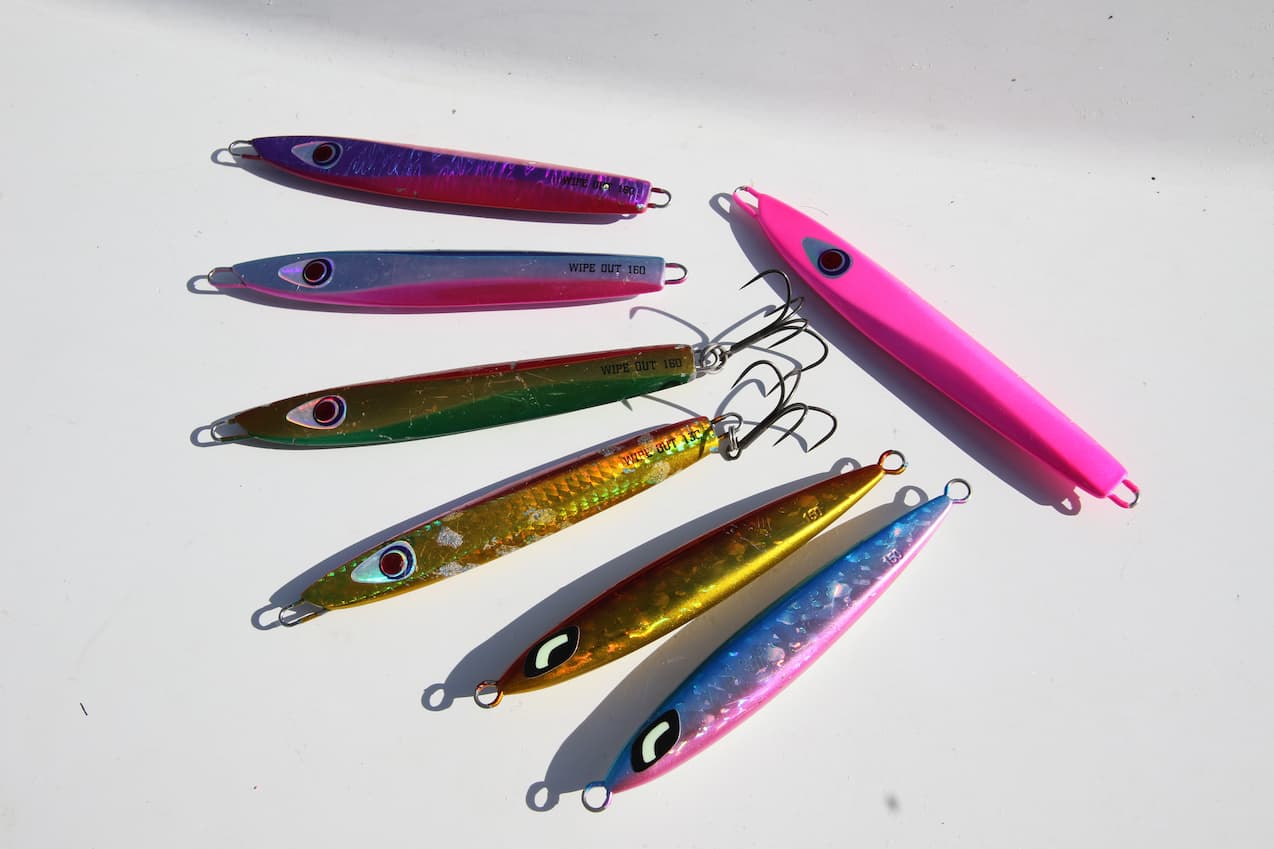
Light jigging is also used with light weight jigs. However, even though the line is thin, heavier jigs may be used to attack deeper water.
Light Jigging Rod Selection
Rods are available from various companies for light jigging. Rods for light jigging can be divided into two main categories. One is a model for targeting fish such as hachio, sea bass, root fish, and recently, cherry salmon, by moving jigs delicately and sometimes finely. The other model is designed for targeting bluefish such as yellowtail, and has a certain amount of power and can be used for violent jerks.
Rod specifications indicate the length, lure weight, and line to be used, and these are the criteria for selecting a rod. Even for the same target fish in the same series, there are various types of rods with different concepts, such as those with tension to move jigs firmly, those with tenacity and softness to move jigs naturally, and those that absorb the movement of hooked fish to reduce the risk of disintegration. Therefore, it is important to confirm not only the specifications but also the design intent of the rod. In addition, there are many aspects that cannot be determined by just checking the specs, so it is best to actually touch and feel the rod at the store and listen to the advice of the store staff in order to narrow down the selection process.
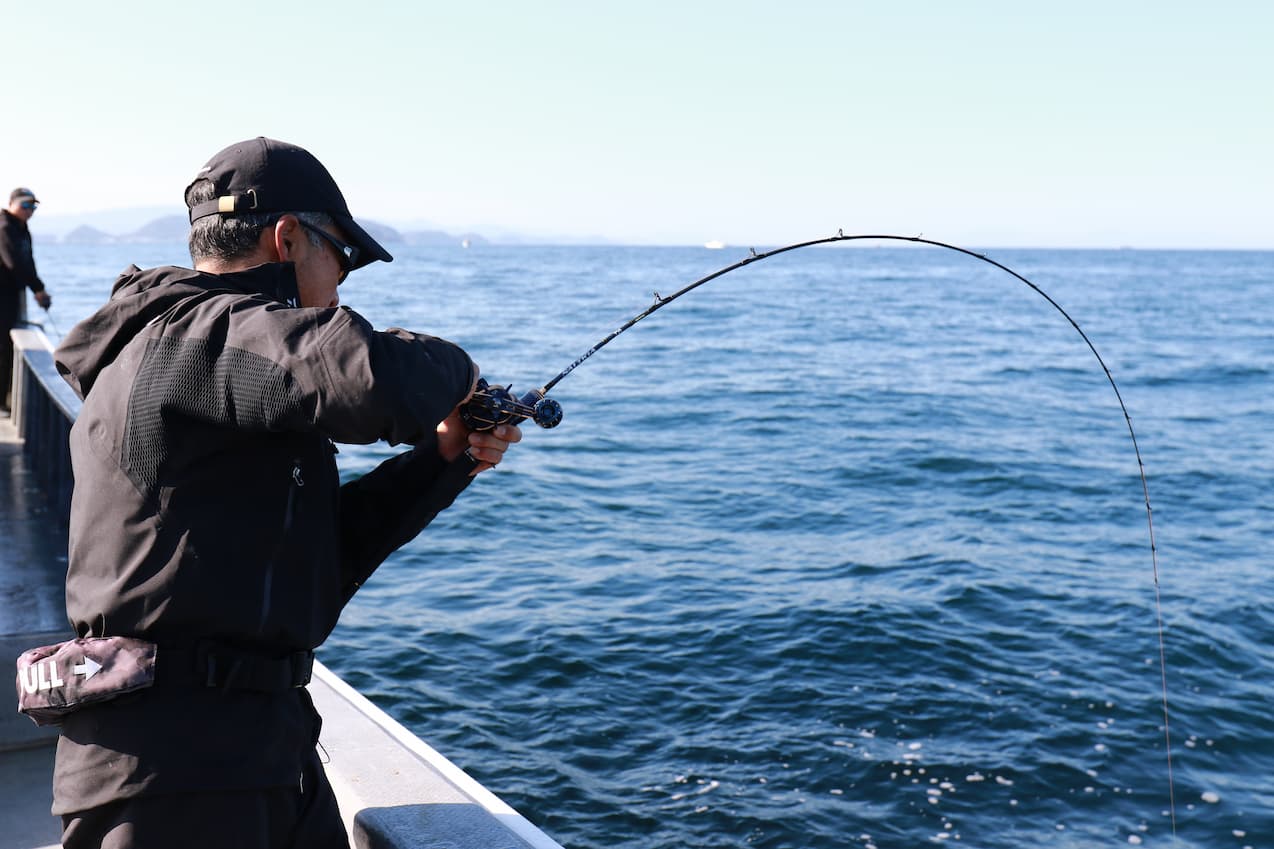
When choosing a rod, it is important to know the concept of the rod well.
Incidentally, lengths exist from short rods in the 5ft range to long rods in the latter half of 6ft. The most common is the first half of 6ft. This length is easy to use on a regular passenger boat. Shorter models are good for inputting detailed and intense jerks, while longer models are flexible enough to move jigs widely and to reduce disentanglement by the rod’s high absorption rate after a hit.
The grip area is another area of concern. When jigging, which requires continuous jerking, the rod should be comfortable to hold when the reel is set on the rod. Also, the lighter the rod is, the better. In any case, when choosing a rod, the first question to ask is, “What are you going to fish for? What kind of fishing do you intend to do? and “What kind of fishing do you intend to do? There is no rod that can be used for all types of light jigging, and a rod that has a wide range of uses may end up being a bit of a one-size-fits-all solution. If you choose a rod that has a clear purpose, you will be able to catch more fish.
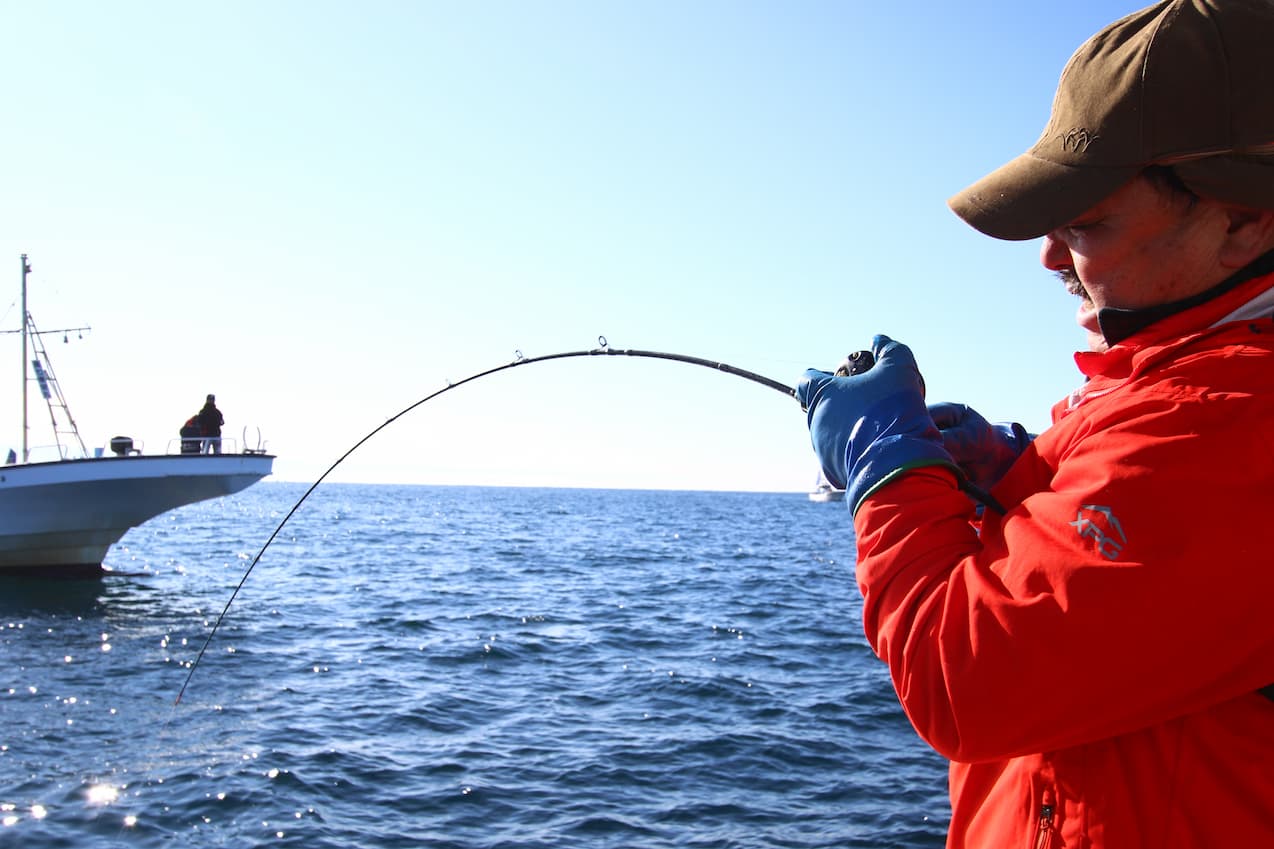
Choosing a rod depends on the question, “What are you fishing for?” What kind of fishing do you want to do? and then select a rod based on those criteria.
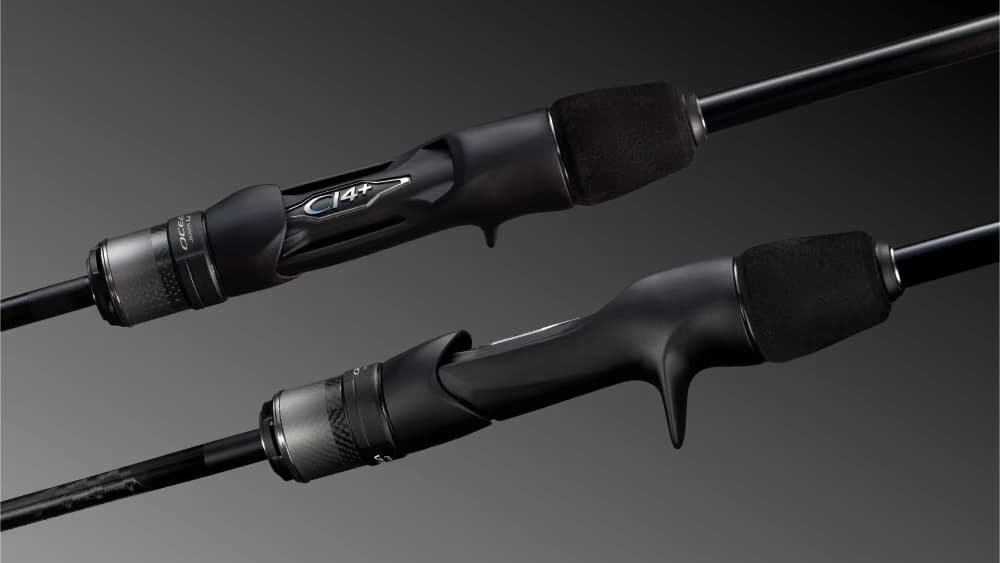
In addition to the blank performance, you should also check the reel seat attached to the rod. The easier it is to grip, the less tired you will be and the more you can concentrate on fishing.
Differences by rod structure
Light jigging rods include carbon tubular, carbon full solid, and solid tip rods. When selecting a rod, it is important to understand the characteristics of each type.
(1) Tubular
Rod blank is made of hollow material and lightweight. The rod blank is made of a hollow material and is lightweight, making it easy to feel fish signals, underwater conditions, jig movements, and other details in the hand. However, it is taut compared to other materials and does not support extreme bending, and its natural bite is lower than that of a solid structure. It is suitable for anglers who can move a jig skillfully, grasp a bite by themselves, and hang a jig firmly.
(2) Full Solid
Rod blank is filled with carbon material from the tip to the grip end. Compared to tubular rods, the same thickness is heavier. Solid material is not as sensitive as tubular rod, but it is flexible enough to bend, so it is less likely to repel a bite from a fish and leads to hooking more naturally and automatically. It is also more supple and flexible, making it difficult for the lure to fall apart after it is hooked.
(3) Solid tip
This rod is a combination of tubular and solid rod. This model uses solid material for the tip of the rod. This model is designed to catch small bites and short bites firmly by having a flexible tip. The tubular construction of the rod except for the tip makes it more sensitive than a full solid rod, and it is easier to control a jig with agility.
In addition, while we have focused mainly on carbon rods, boron and glass rods are also available. Boron is a material with strong elasticity. Some light jigging rods are made of this material. Glass is a rod made of glass fiber. It can be used to make rods with flexible performance, but it is heavy and is not often used in light jigging rods.
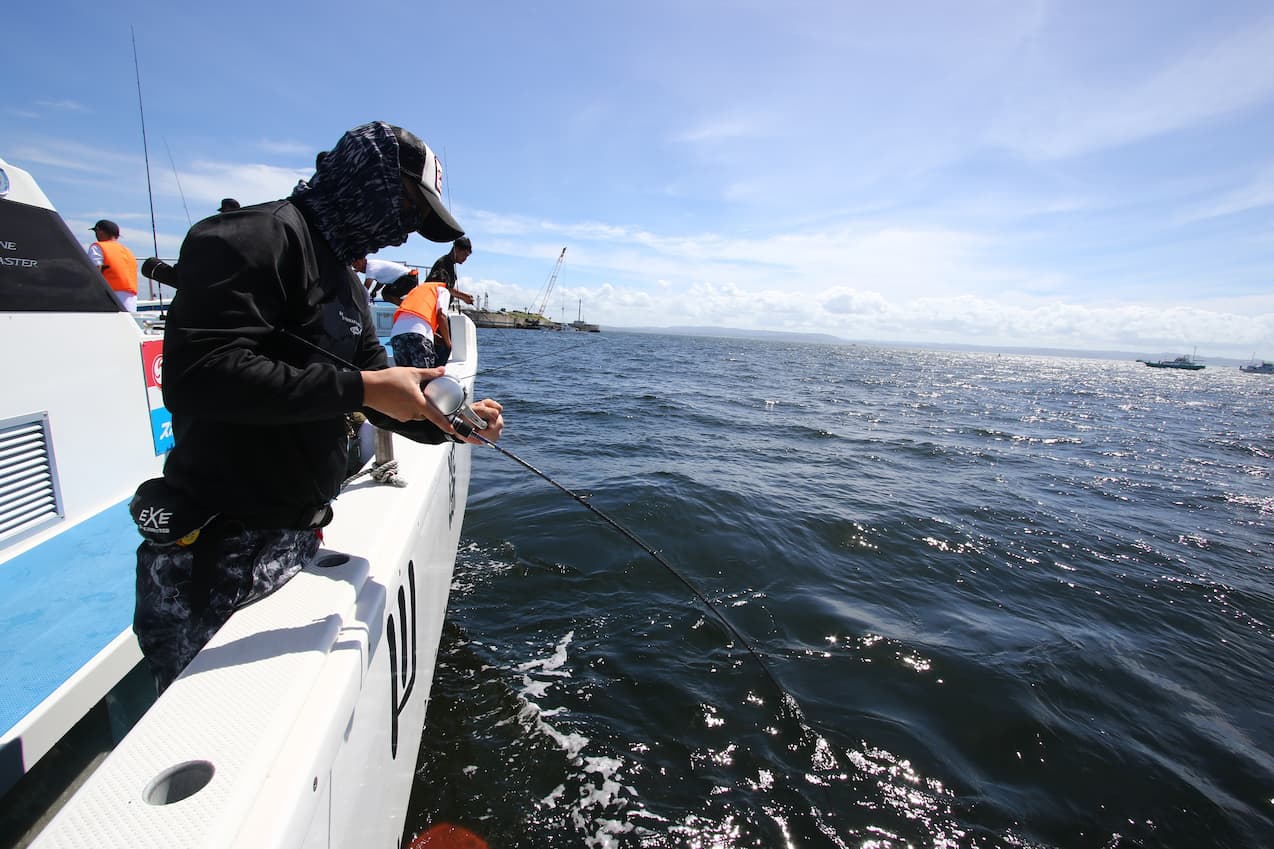
There are different types of rod construction. You want to choose the one that best suits your fishing.
Choosing a reel
When choosing a rod, you should decide at the same time whether you will use a bait reel or a spinning reel. First, choose a fishing spot and target. If the fishing boat is vertical (dropping a jig directly down), a bait reel will be easier to use. A bait reel is easy to catch a bite on the fall, and it can be reeled in and out with a single clutch, making it easy to turn the reel and know when the fish is at the bottom. Jigging for hairtail, sea bass, and bluefish in bays is often done vertically, and bait reels are often used. Jigging boats can either be set up with spankers (sails at the stern of the boat) and pointed perpendicular to the wind, or they can be set up with the side of the boat against the wind and floated in the dotted-deck current. In the case of the spanker current, the boat is moved back and forth to the point to search for the point while making adjustments. Therefore, the dropped line goes almost directly under the boat, and a bait reel is easy to handle on such a boat.
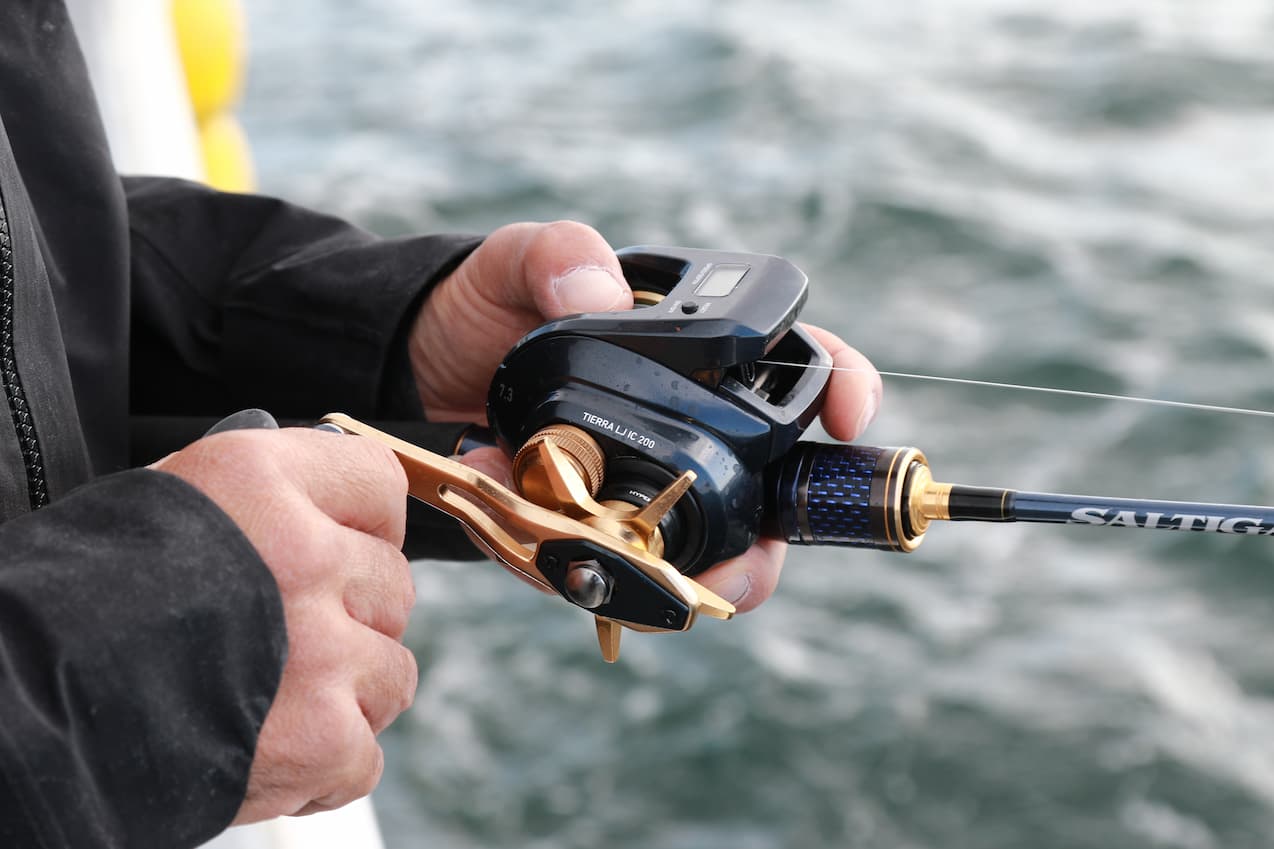
Many light jigging is dominated by the bait type. Recently, many people use models equipped with a counter that instantly shows the position of the jig.
On the other hand, spinning reels are easier to use with less trouble when fishing with casting. Spinning reels are used when inserting a jig into a remote location, when casting and jerking diagonally to search widely, or when using techniques such as calculating where the jig will land as the boat is being swept by the current. Spinning is also easier to use when a fast jerk is necessary.
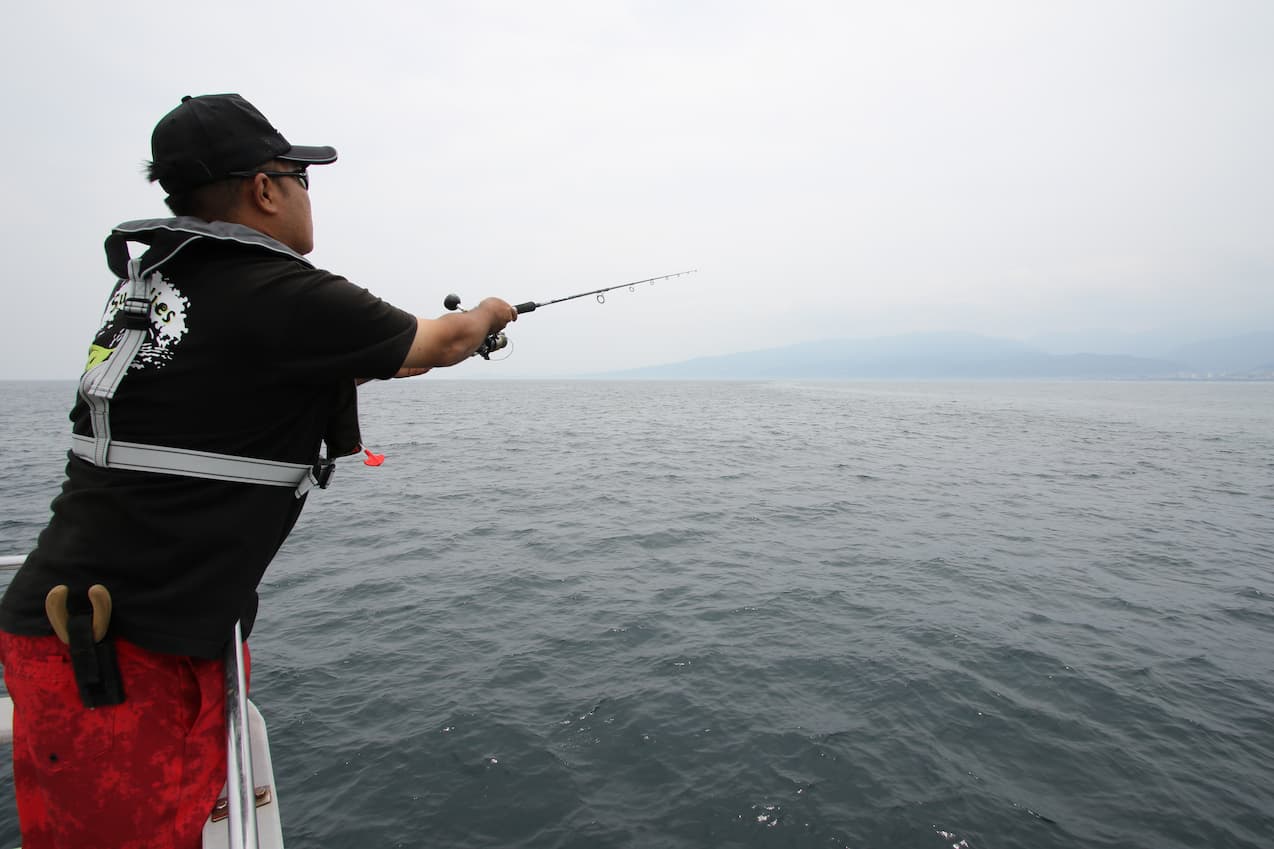
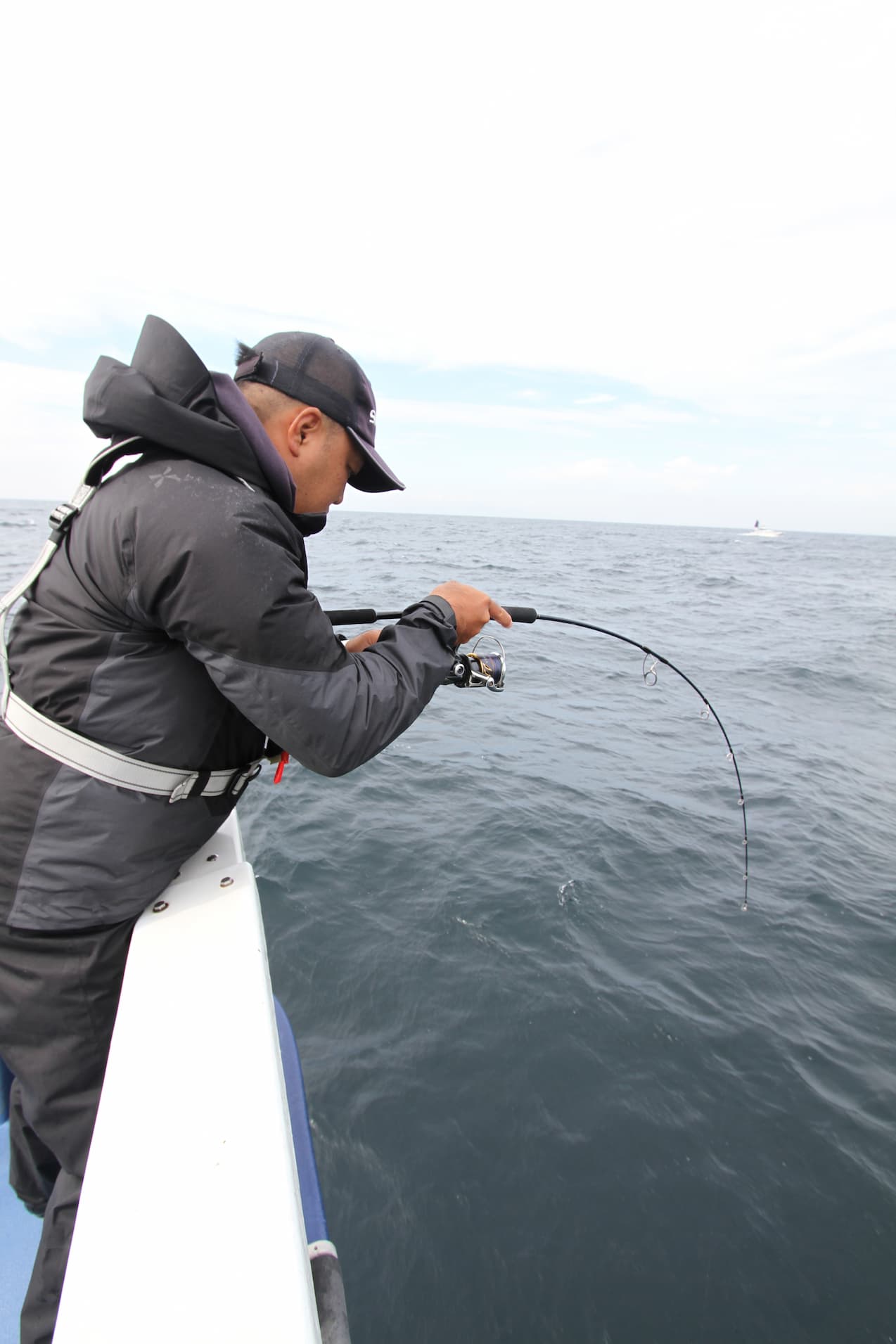
Spinning tackle is chosen for light jigging to produce fast jig movements or to cast a jig to search a wide area. The photo shows jigging for skipjack, which is possible only in Sagami Bay after August.
Both have their advantages, but bait reels are used more frequently on passenger boats for light jigging. However, when targeting bluefish, spinning reels at high speed may be more effective, so it depends on the area and target fish. If you are not sure, it is best to ask a store or a fishing boat familiar with the area you are visiting.
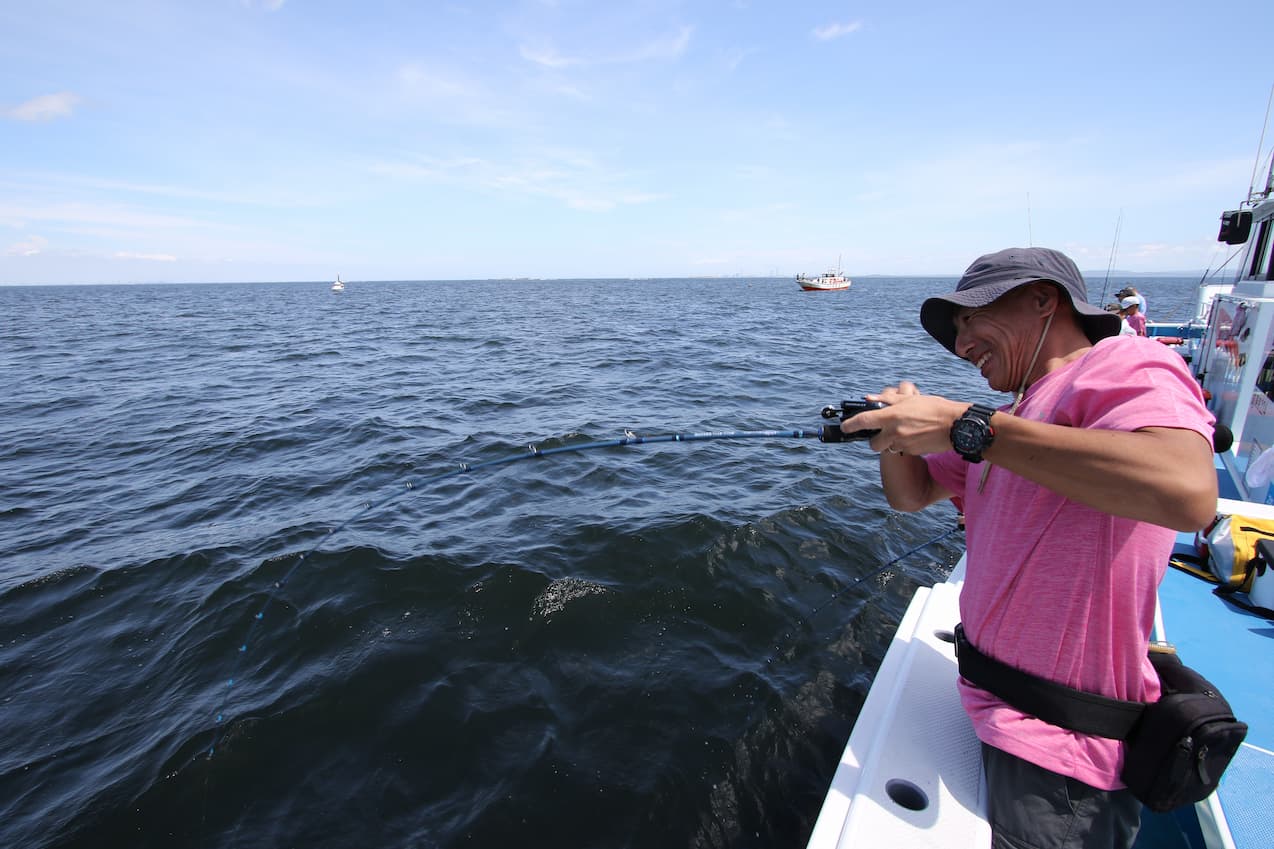
To improve your fishing results, it is important to choose a rod that suits the fishing and your fishing style.
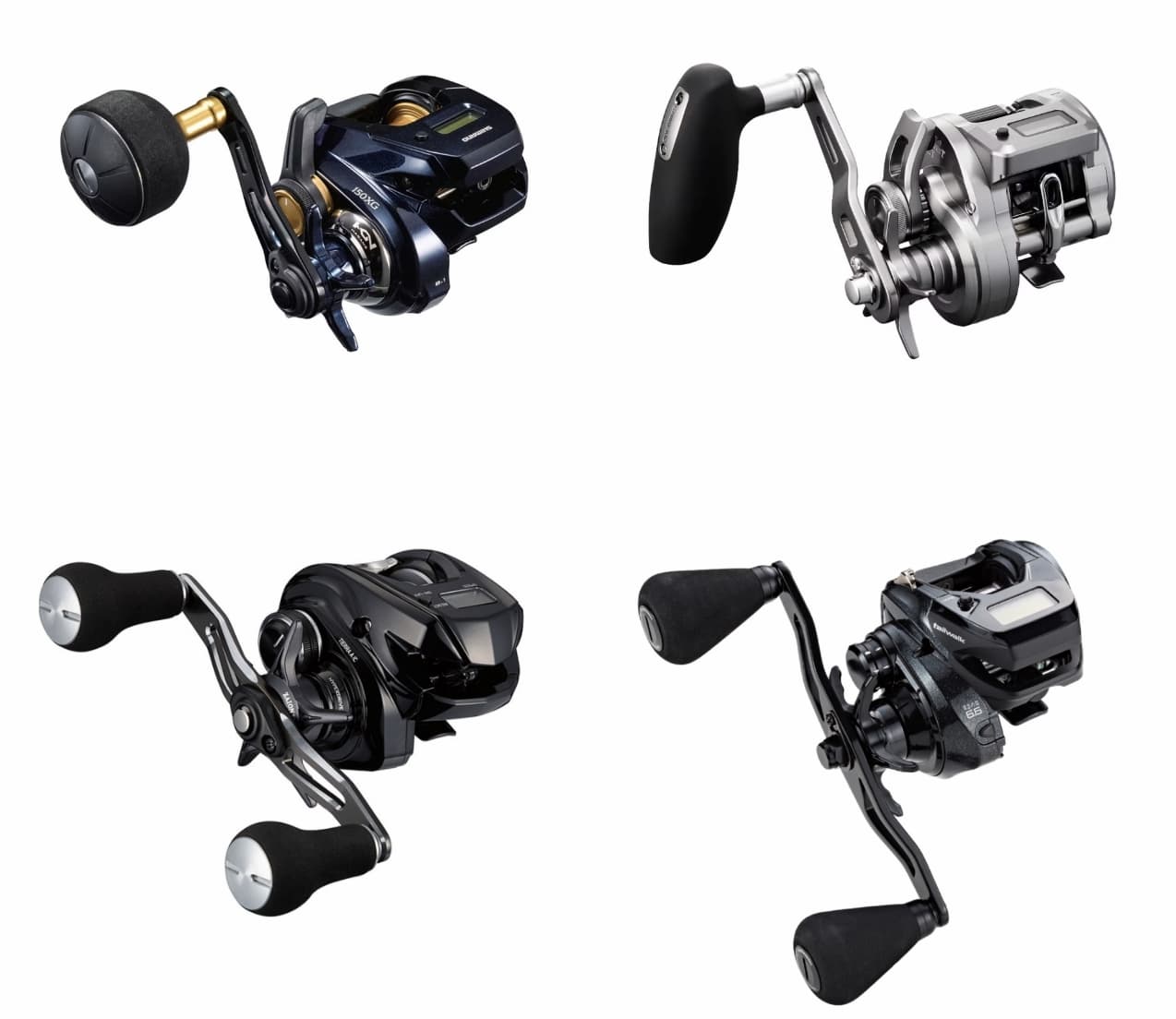
Various bait reels for light jigging are available from various companies. It may be difficult to choose the right one, but please check the following checkpoints before selecting the right one. Incidentally, there are bait reels with star drag and level winder type as shown in the photo above, as well as those without level winder and those with lever drag.
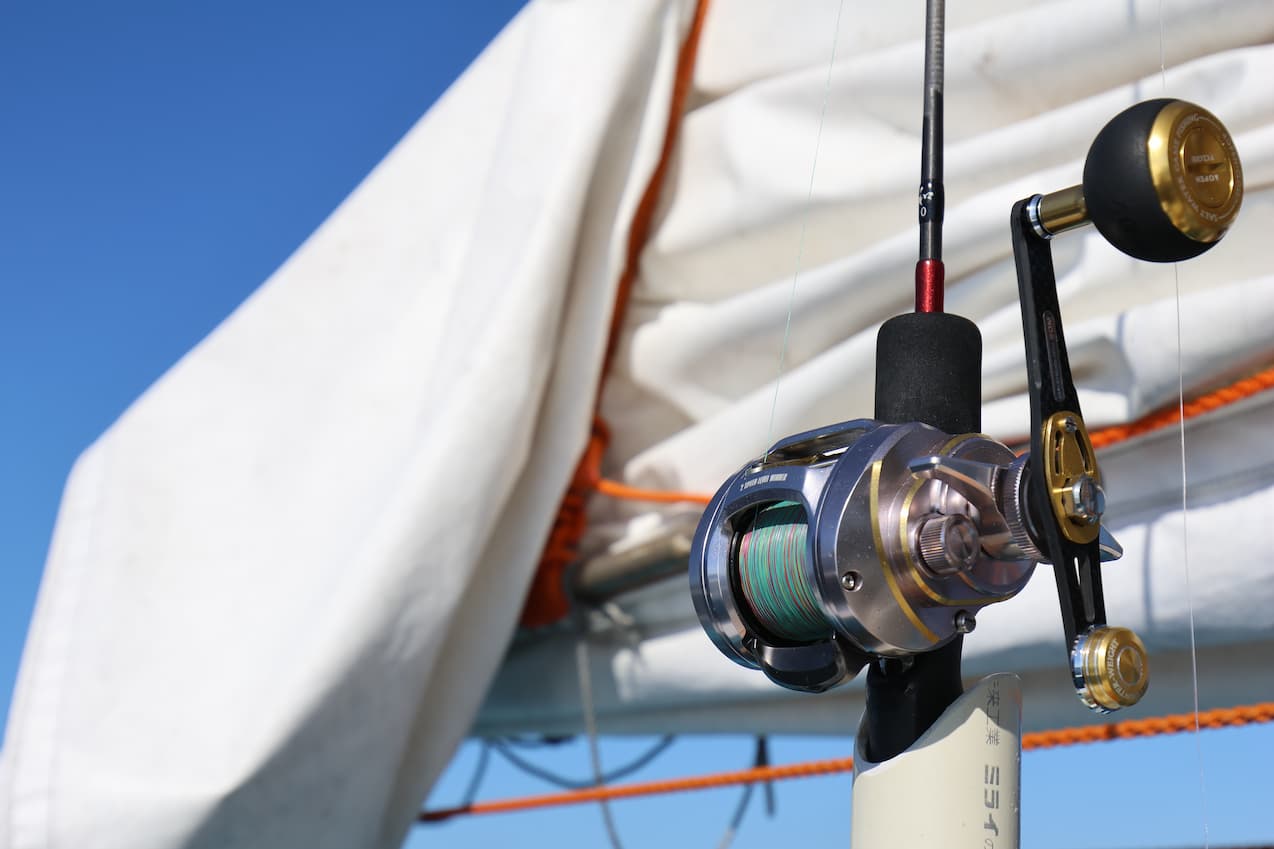
The photo shows the Studio Ocean Mark Blue Safari, a one-of-a-kind model that combines the performance of a star drag with that of a lever drag. This model allows anglers to easily catch fish while skillfully manipulating the drag.
Jigging for Red Seabass in the Middle and Deep Sea Tackle selection by expert angler Yasuo Nishimoto
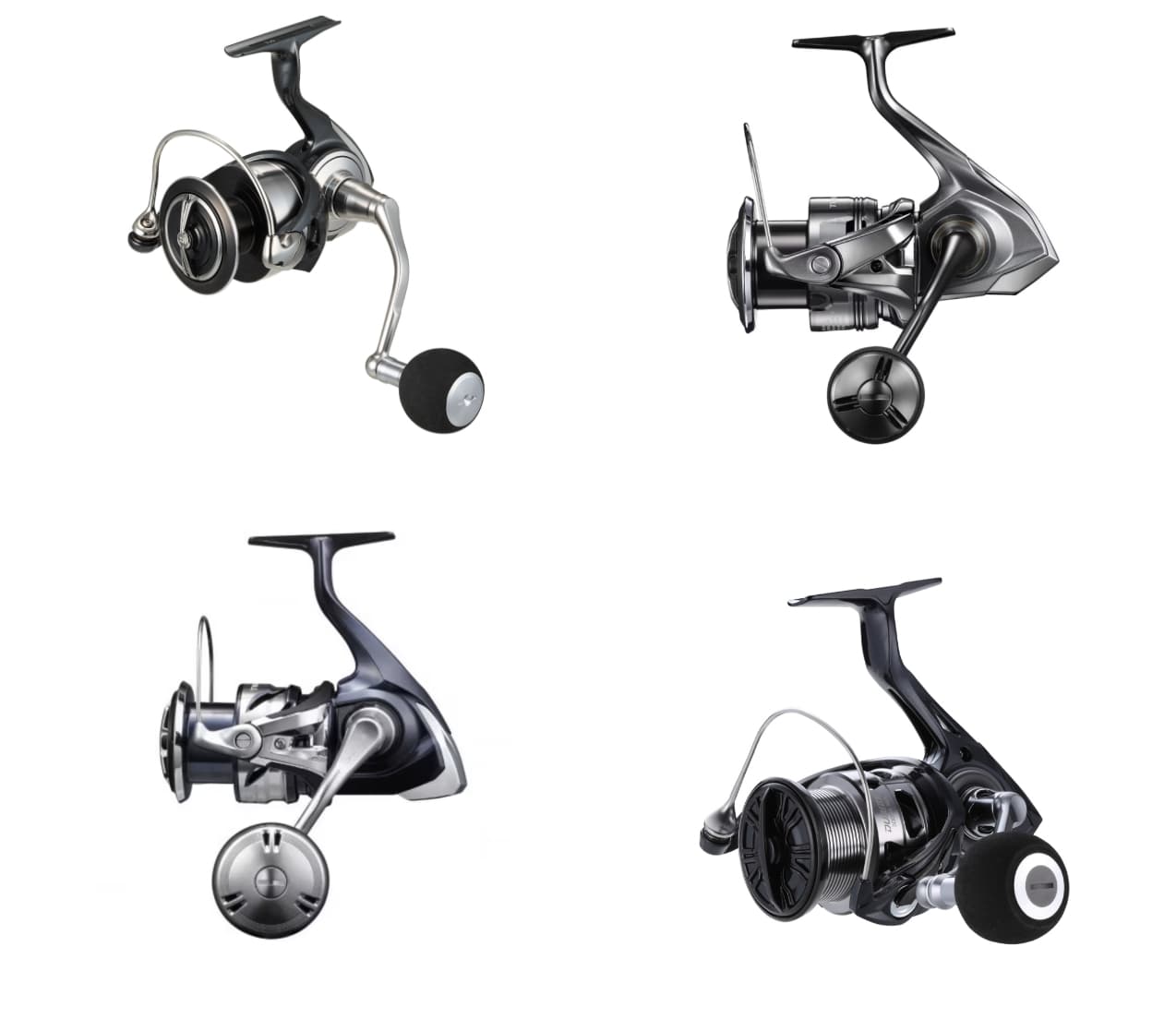
There are a variety of spinning reels, but while there are differences in construction and performance, there are not as many functional differences as with bait reels.
Reel Performance and Size
What is also necessary when choosing a reel is performance and size. Just because it is light jigging does not mean that an inexpensive reel is sufficient. The higher performance reel has better drag performance and take-up performance. Because light jigging uses thin line, a reel with good drag performance is desirable, and a reel with good rewinding performance will prevent fatigue and allow anglers to continue luring without losing concentration. The performance of a reel is directly reflected in its price. If your budget allows, you should choose a reel with high performance.
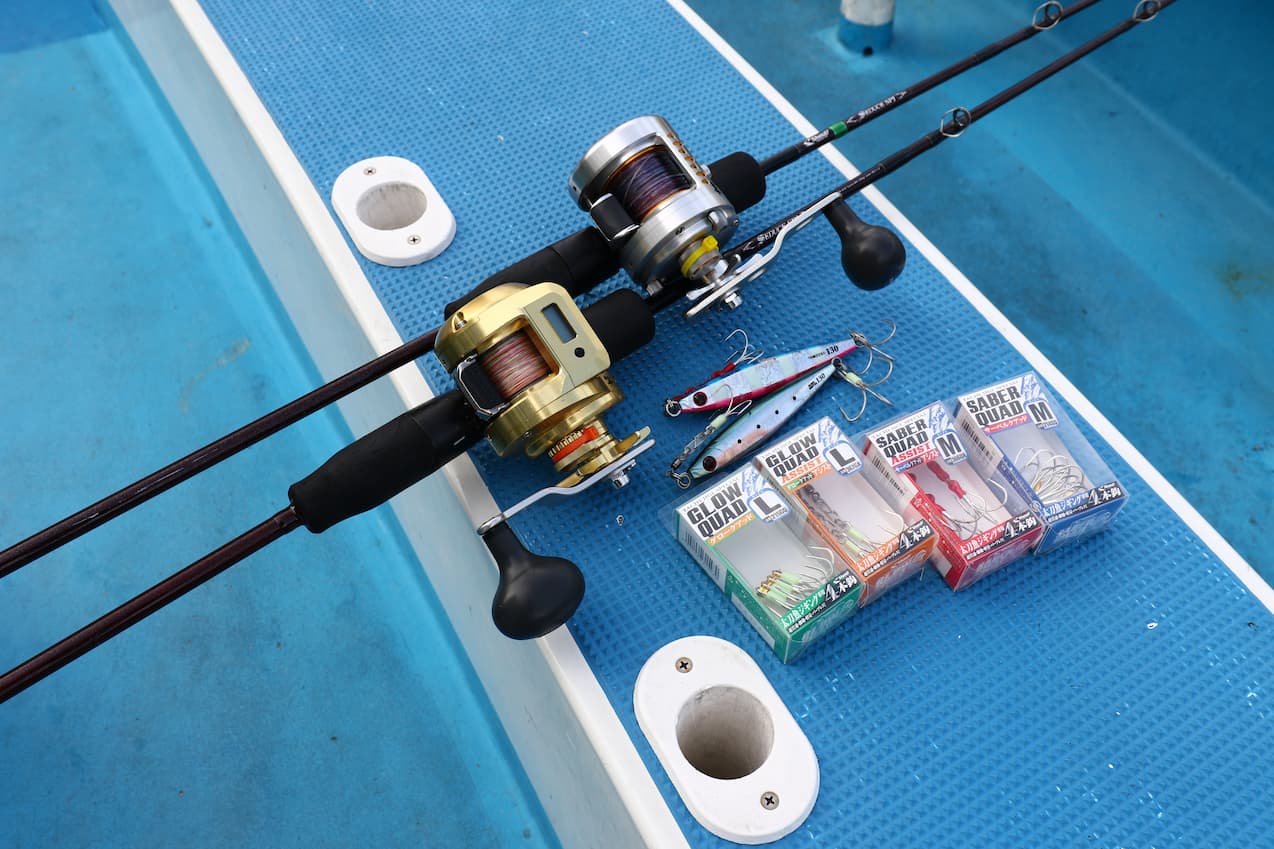
Even though light jigging can be easily enjoyed in a familiar field, you should choose a reel with adequate performance. Since the line is thin, it is better to use a reel with good drag performance. When a fish of an unexpected size or fish is hooked, a good drag performance may allow the angler to handle it over a longer period of time.
Also, the size should be selected according to the depth of the water to be searched for and the current method of the boat you are on. Basically, the line to be used should be able to hold twice as much line as is put out when searching. This is so that you can continue fishing in case of a line break. A line break is not only when the PE line and leader are tied together or the leader breaks, but also when the PE line breaks in the middle of the line. This can be caused by a line crossing that loses strength or by being cut by a sharp-toothed fish. It is necessary to have enough line capacity.
Checkpoints for reel selection
① Size
As for size, as mentioned above, the guideline for size is based on 150-200 m of line to be used. However, this is when the water depth is shallow and the line is vertical. If the depth to be explored is 200 m and there is a possibility of exploring deeper areas, it is best to use a line with a line capacity of 400 m, which is more than twice the depth of the water. Even if the depth is shallow, if you are going to explore diagonally with a dotella current, it is best to select a reel with a line capacity that is at least twice the amount of line released during the exploration.
② Reeling speed
The reeling speed depends on the gear ratio. Look at the reel specifications and check the gear ratio and the rewind volume per rotation of the handle. Normal gear is easy to use for targets that are best explored by entering the point and moving the jig in small increments. On the other hand, if you need to jig quickly, use a high gear.
③ Counter or no counter
Reels are available with or without a counter. Reels with counters allow the angler to see at a glance where the jig is at any given time. This allows the angler to accurately attack the dana indicated by the captain and the response of the fish finder, and remembering the depth of the hit can lead to the next move in the strategy. Some reels nowadays are equipped with an alarm function, allowing anglers to audibly confirm the distance they have reeled in without having to look at the monitor. Reels without counters, on the other hand, will monitor the depth of the water by looking at the color of the PE line. If the bottom of the sea is the starting point of your jerk and you are fishing a few meters from the bottom, you can approximate the shelf by looking at the line color when the line reaches the bottom and checking by its change, or by knowing how many centimeters the reel you are using can wind in one rotation of the handle. When adjusting the jig to mid-water reactions, it is necessary to constantly check and grasp the line color.
④ Number of bearings
The more bearings you have, the smoother the rotation will often be. Although a model with a large number of bearings is not necessarily necessary, smooth rotation makes for different fatigue when jigging, in which the angler repeatedly drops and reels all day long.
⑤ Handle shape
Bait reels can be double-handled or single-handled. Double-handle reels are easy to operate when luring anglers to a finer range. On the other hand, a single handle is easier to turn when handling heavy jigs or when exploring long ranges rhythmically. There are various knob shapes for both single and double handles. The round shape of the double-handle knob is easy to grip and is often used on small bait reels for jigging these days. Single-handle reels come in round and T-shape. Both types are easy to apply force to, but the round type is often used for light jigging. When jigging for big fish using heavy jigs, the T-type power knob allows for more grip. In spinning, most spinning models for jigging are round or egg-shaped. Both of these shapes are easy to grip and apply force, so it is best to choose a model that is comfortable for you.
⑥ Waterproof performance
Many saltwater-compatible reels are waterproof so that they are less likely to be damaged by salt from seawater. However, even if the reel is waterproof, saltwater, or saltwater OK, it is not perfect against saltwater. In addition to choosing a compatible model, it is necessary to clean the reel with fresh water and maintain it after use.
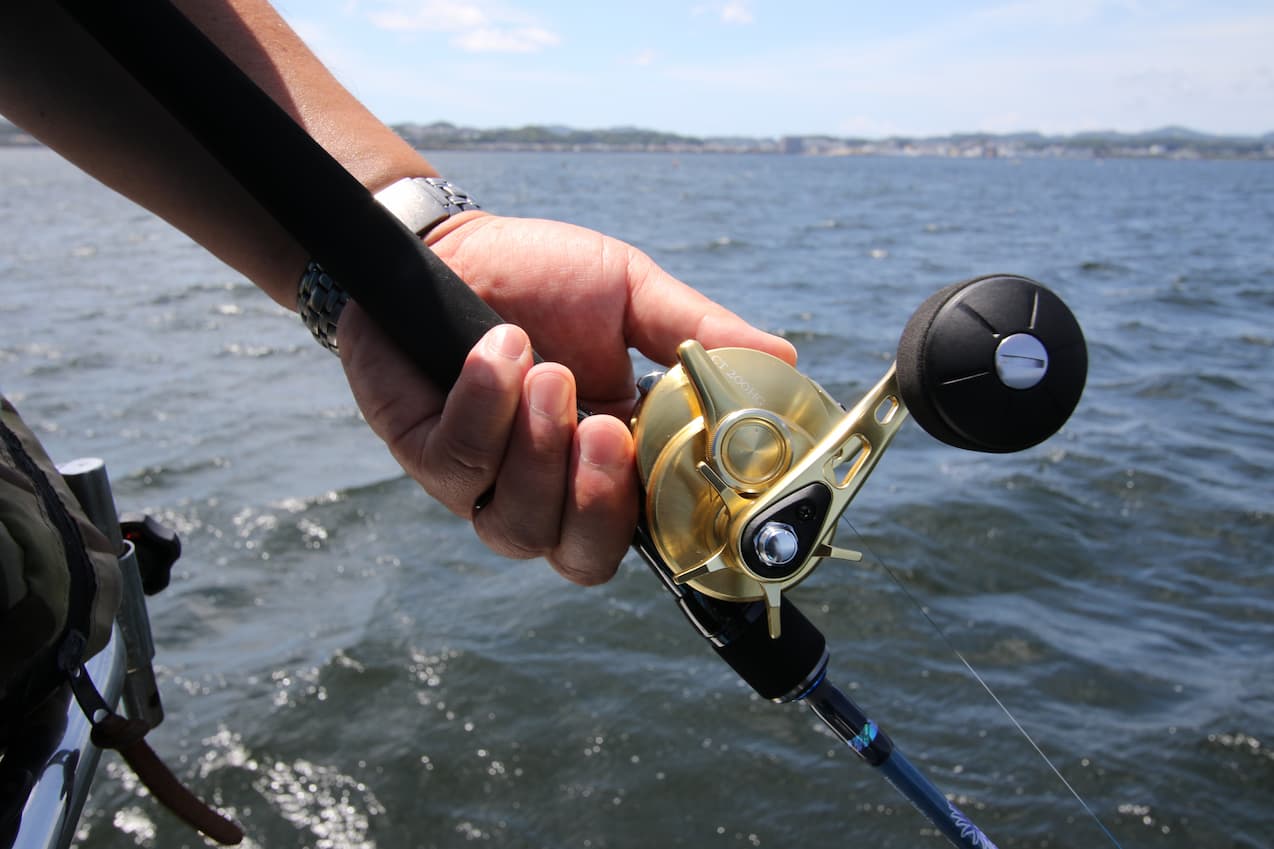
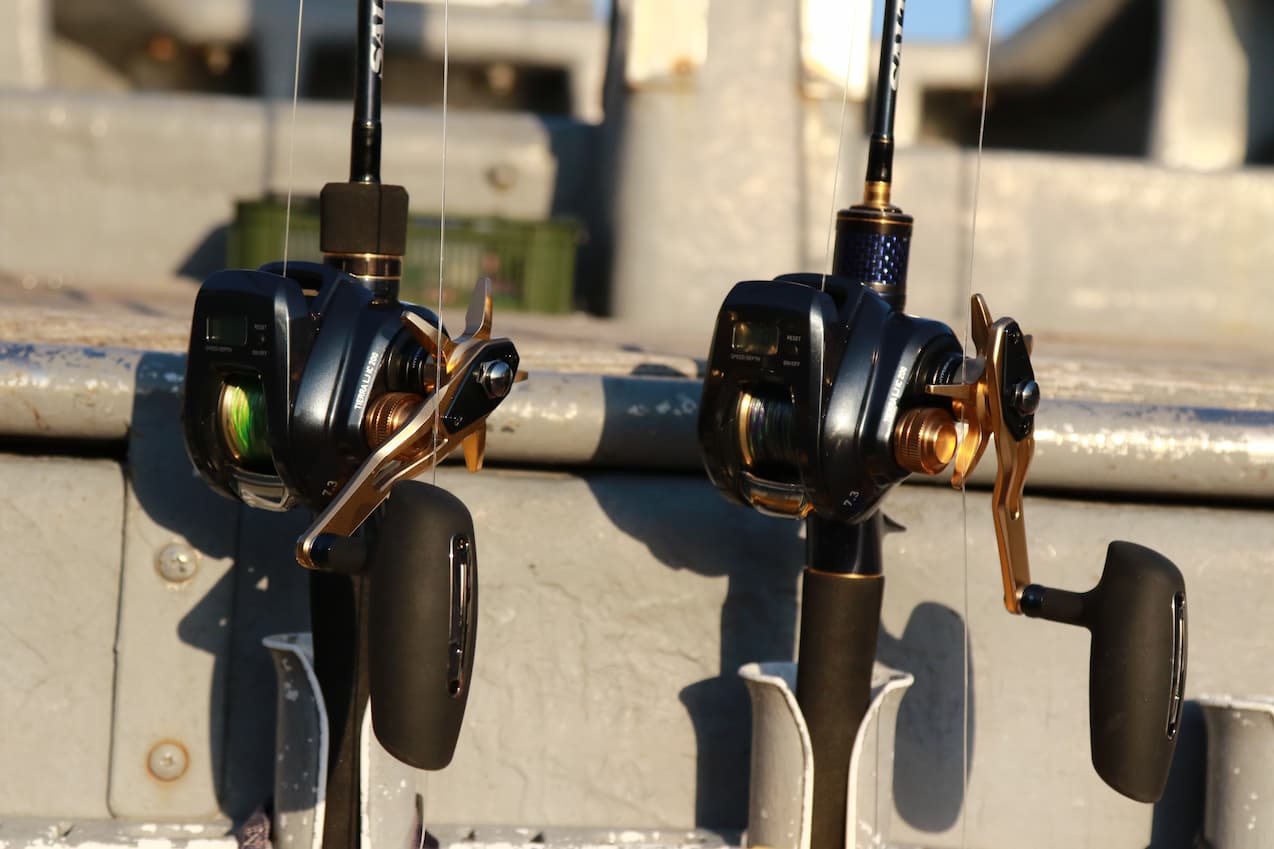
The handle depends on the weight of the jig used and the depth of the water, but you want to choose one that is easy to grip and does not tire easily.
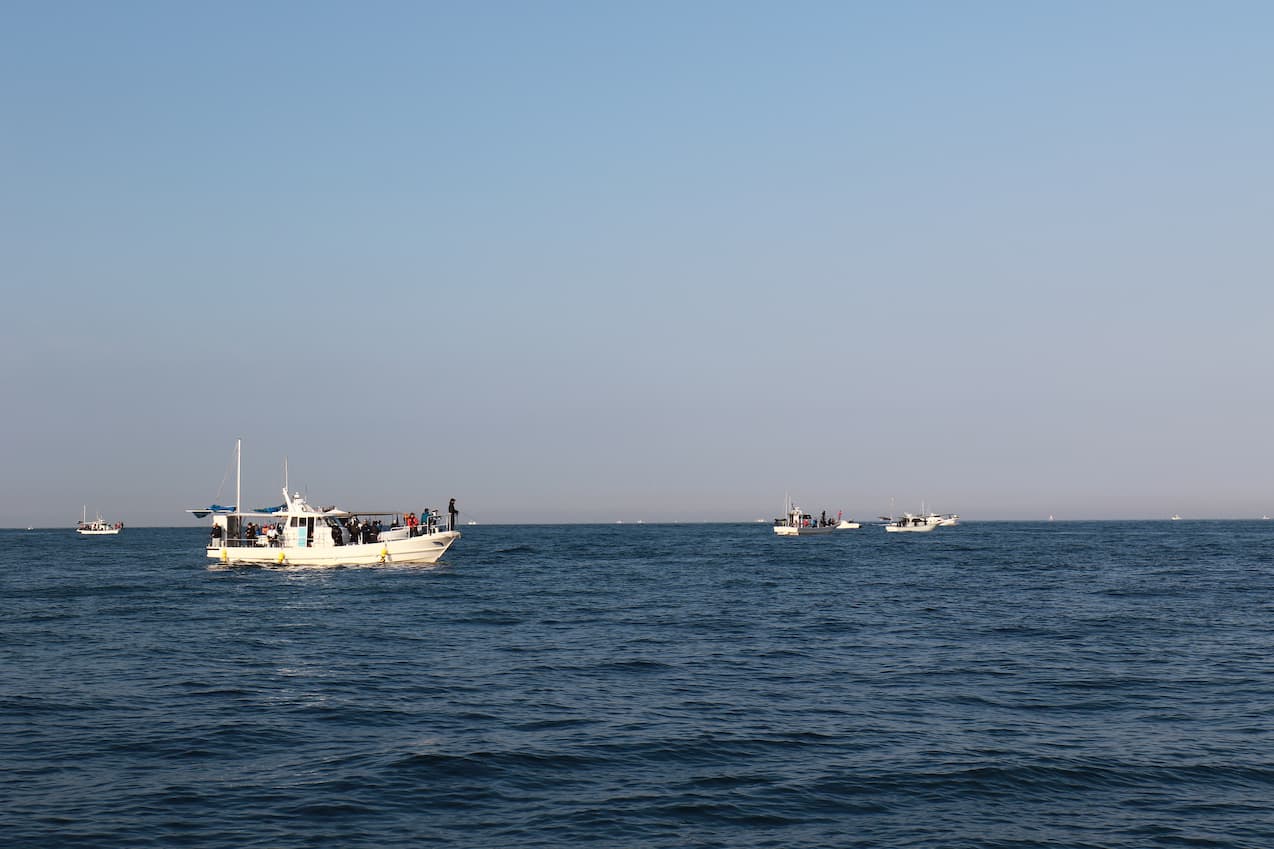
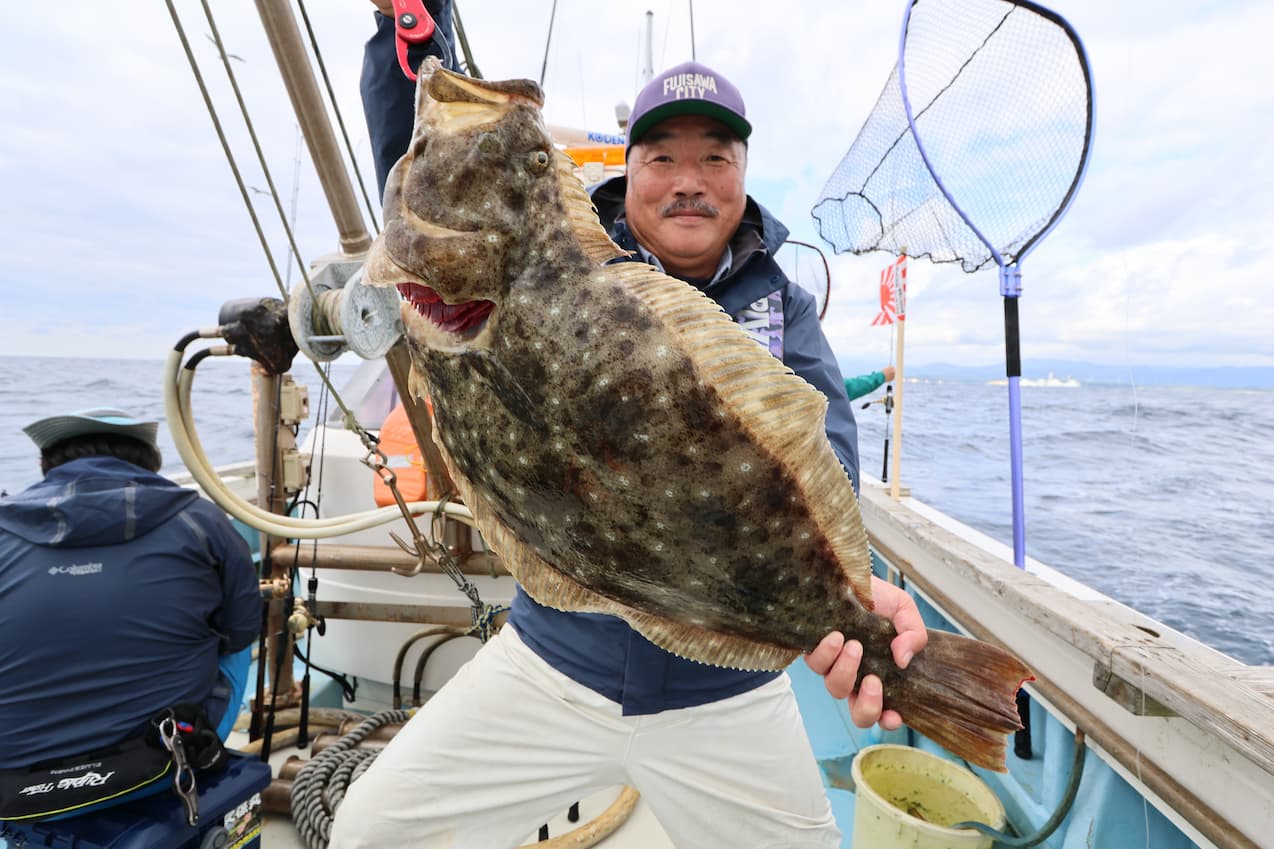
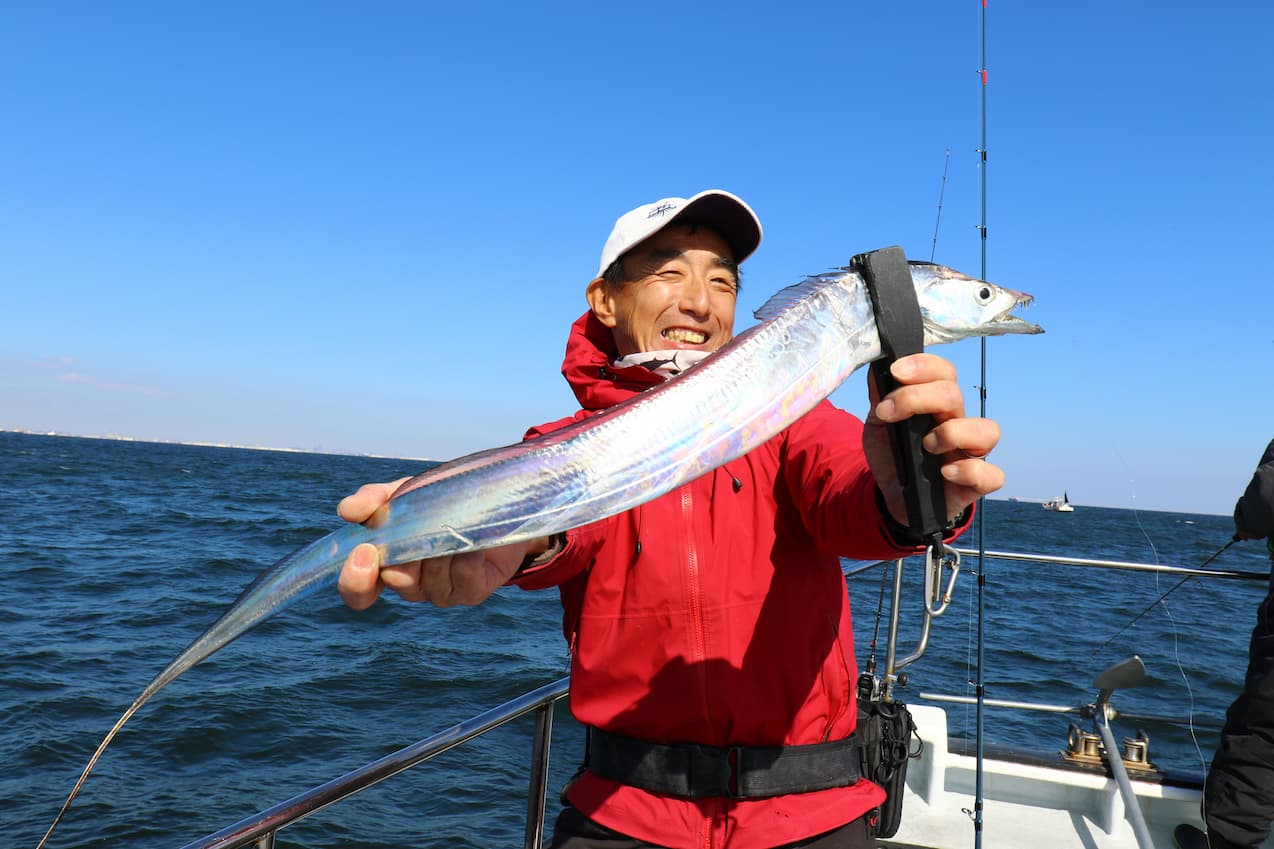
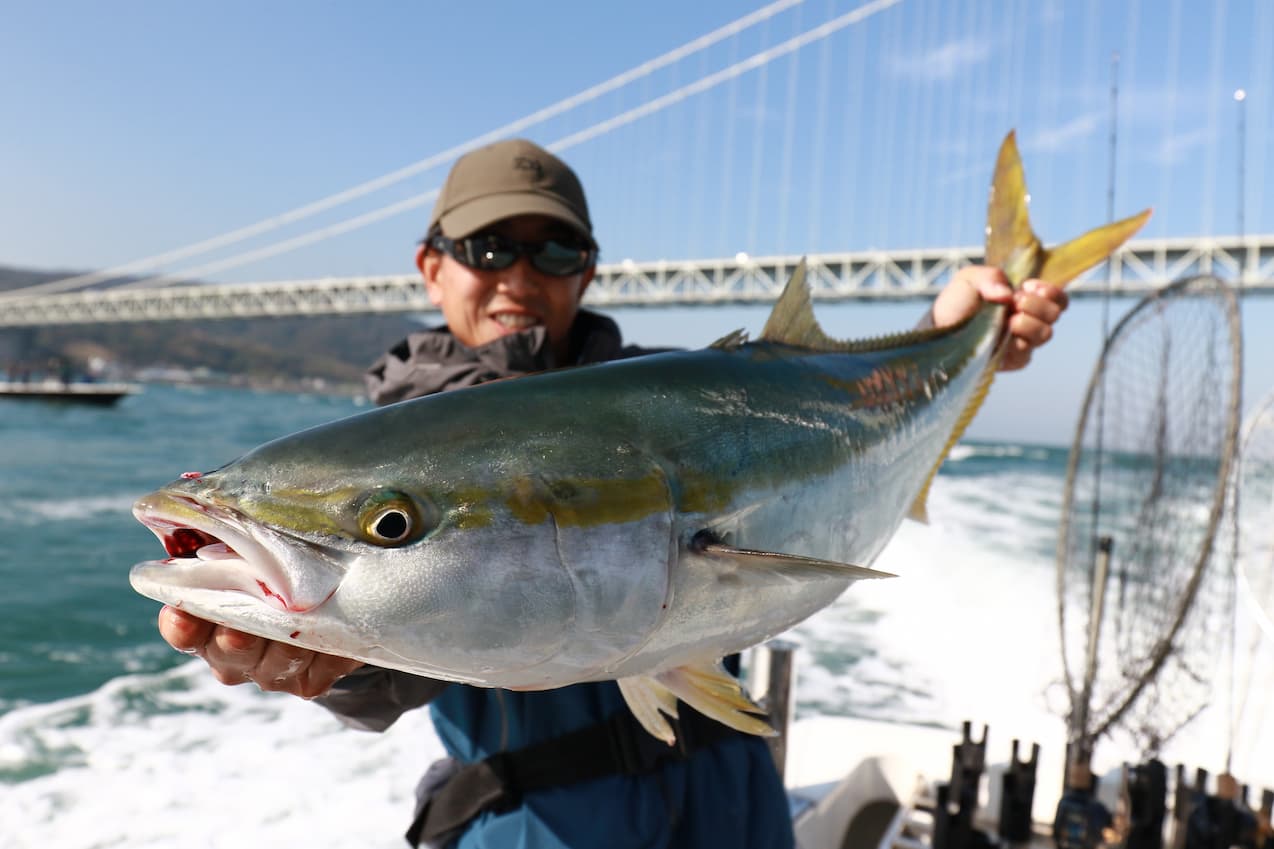
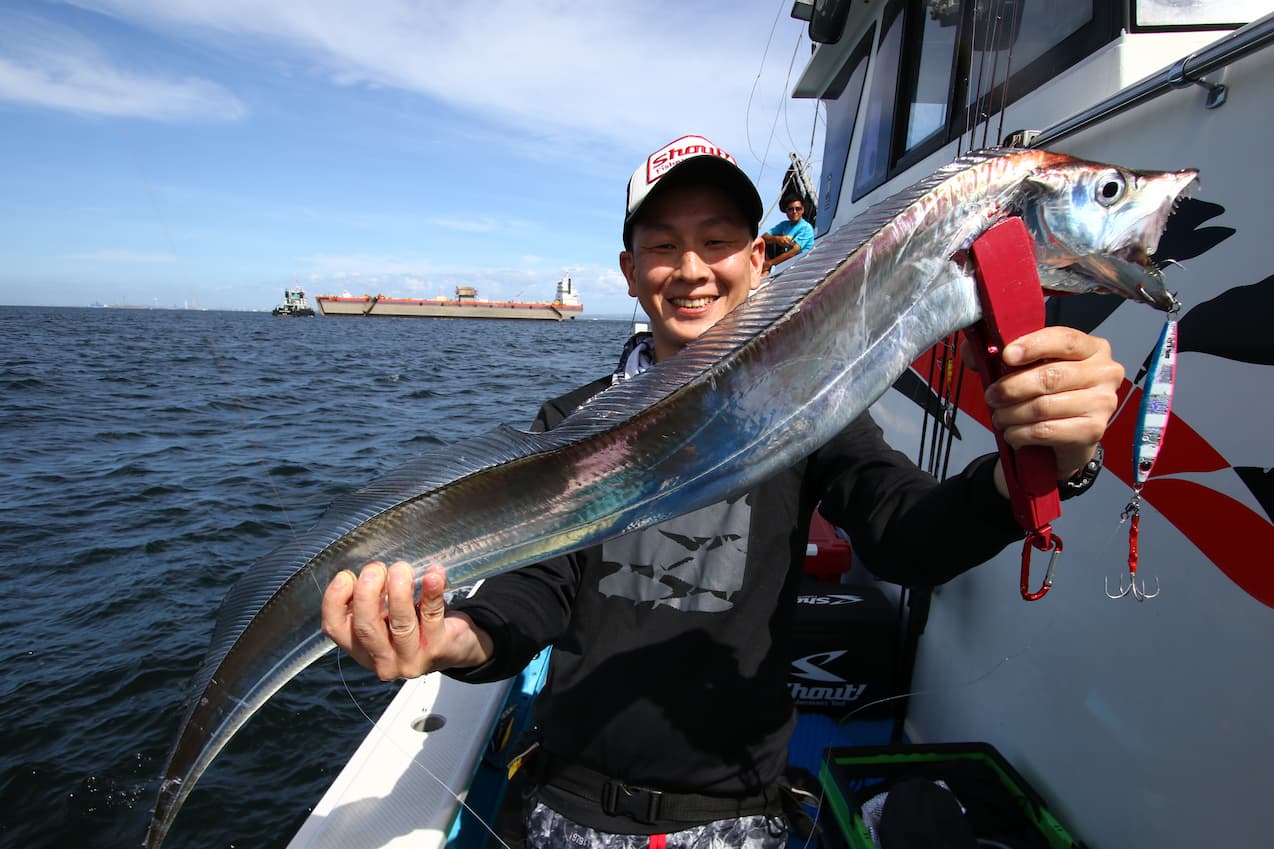
There are various types of light jigging depending on the area. We hope you will enjoy jigging in a field near you.


